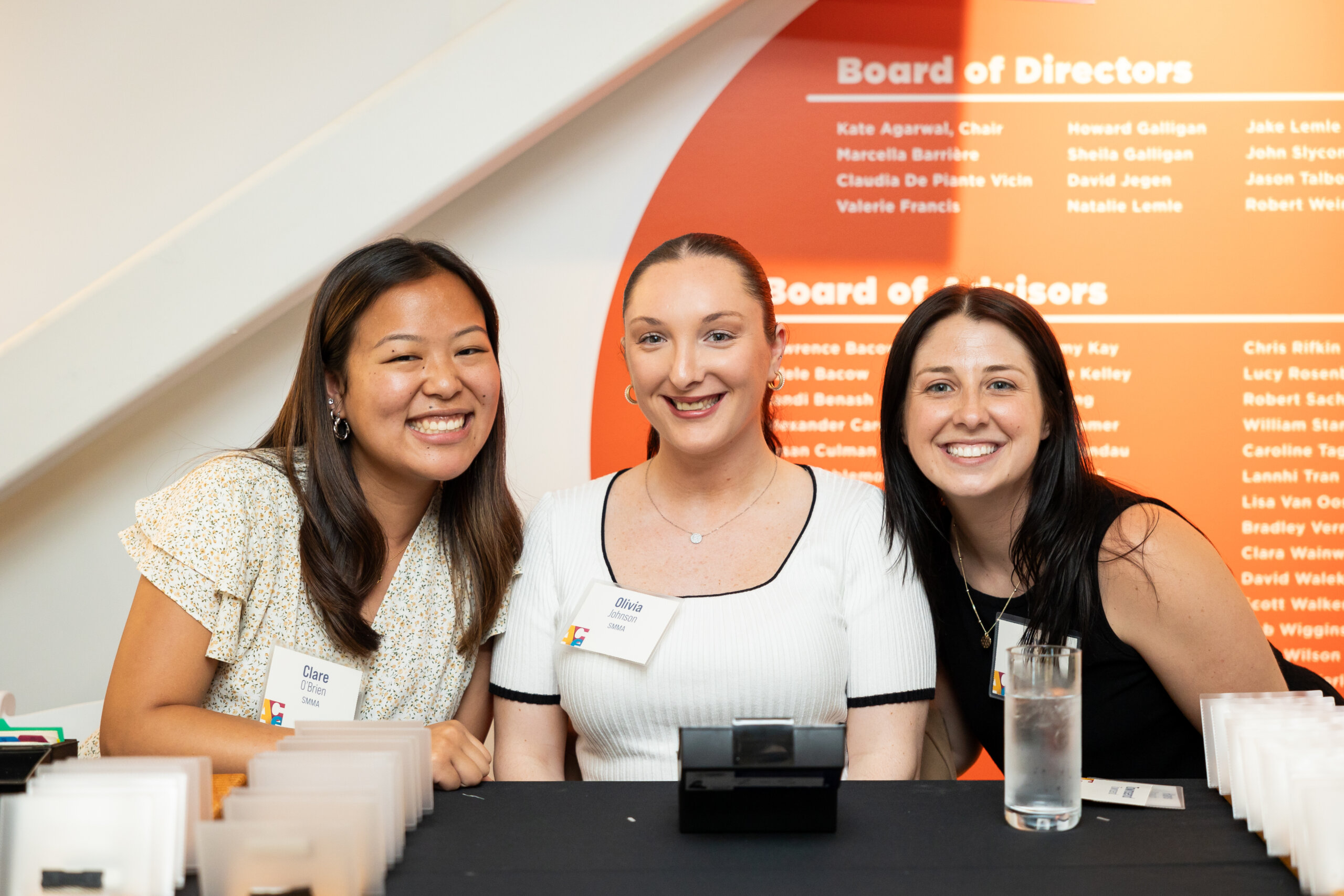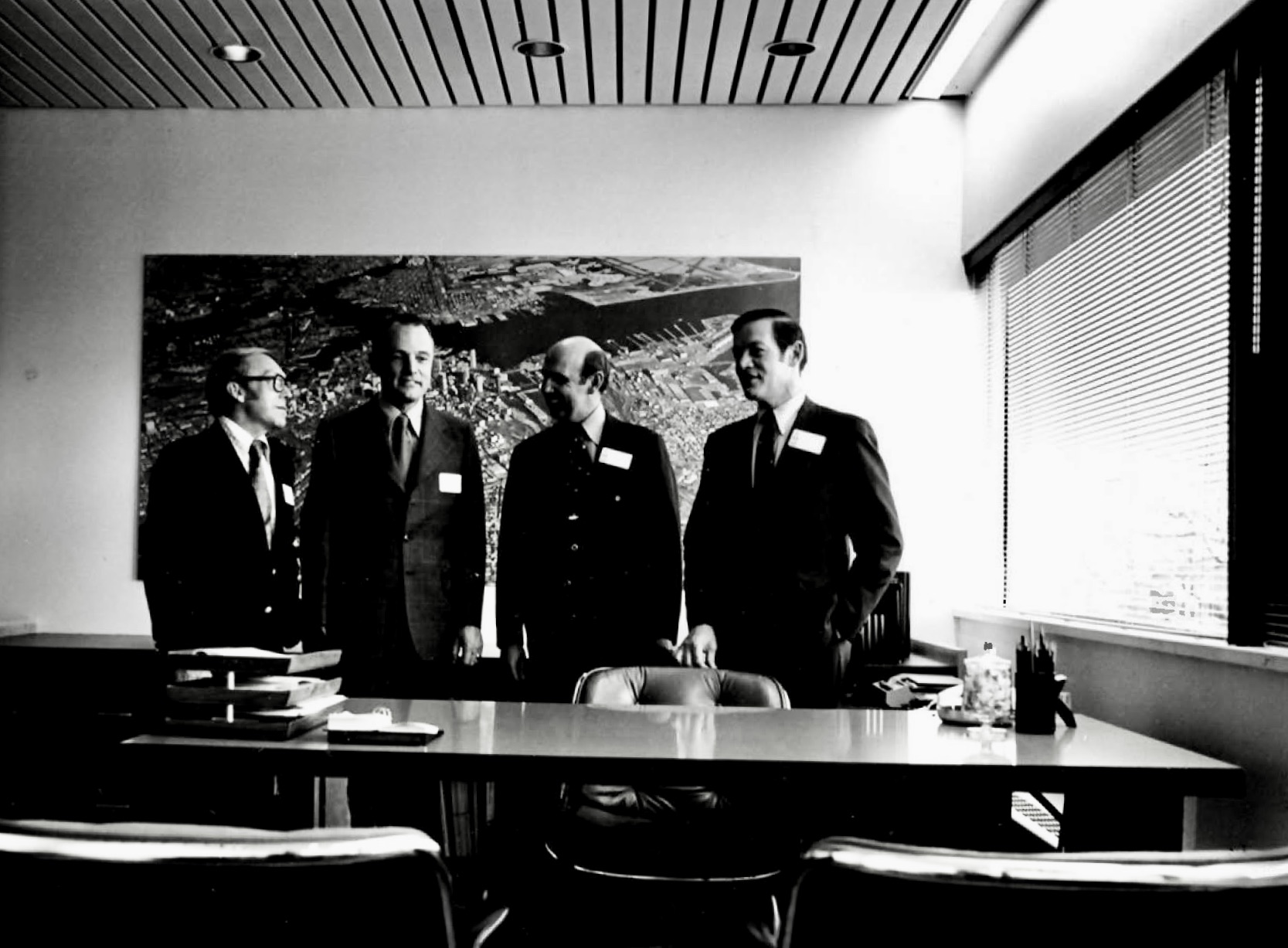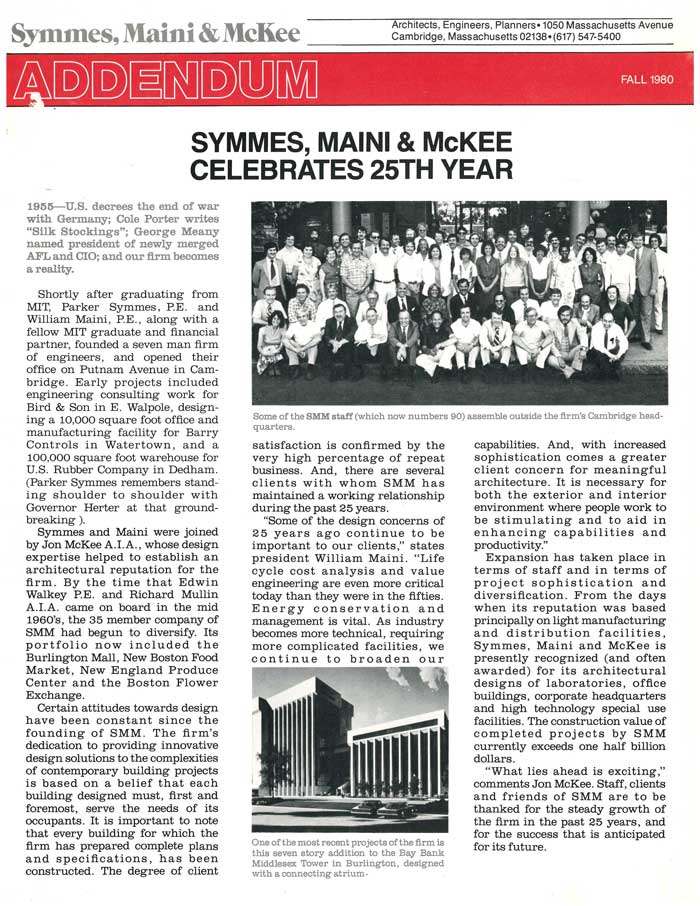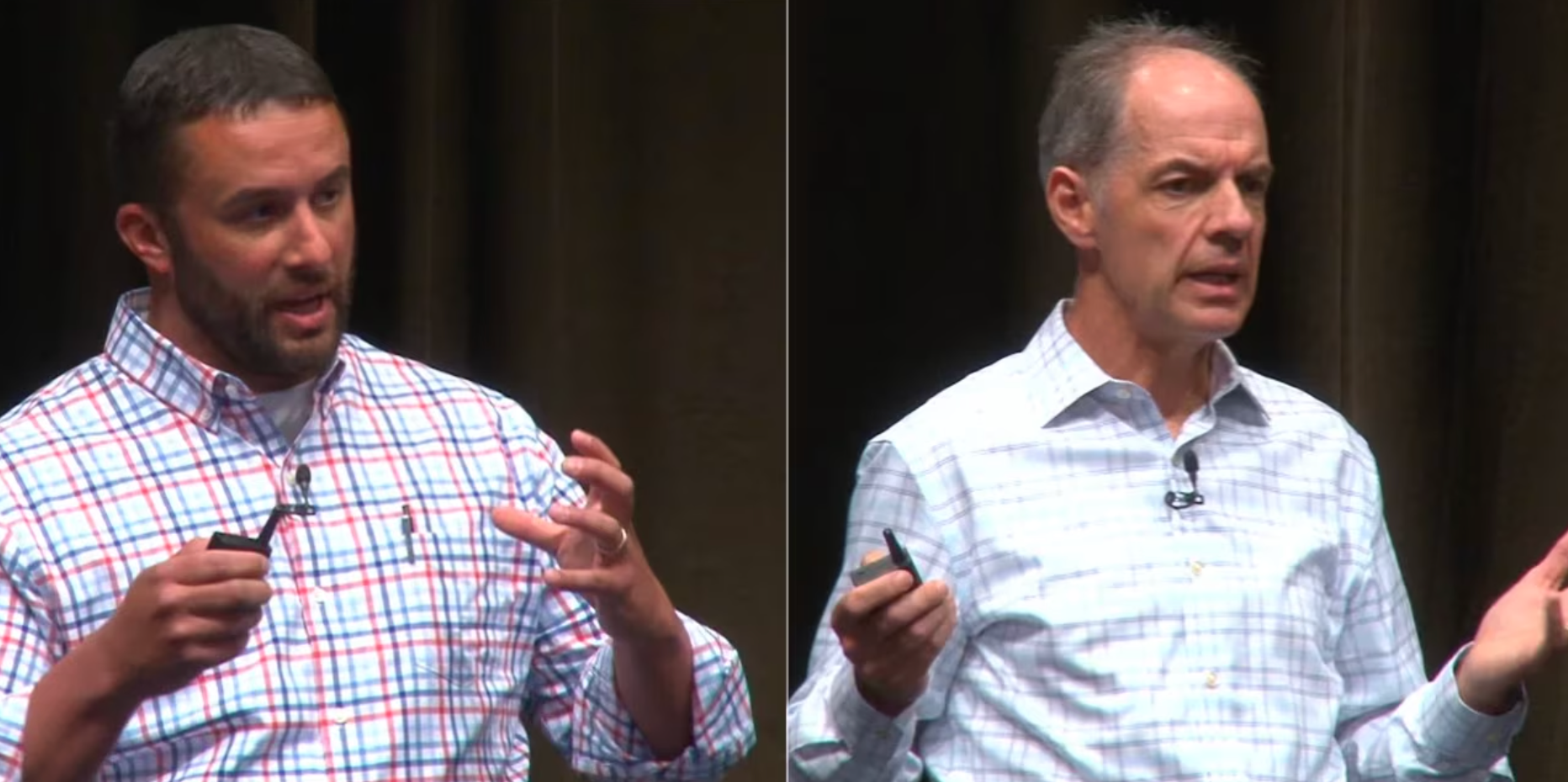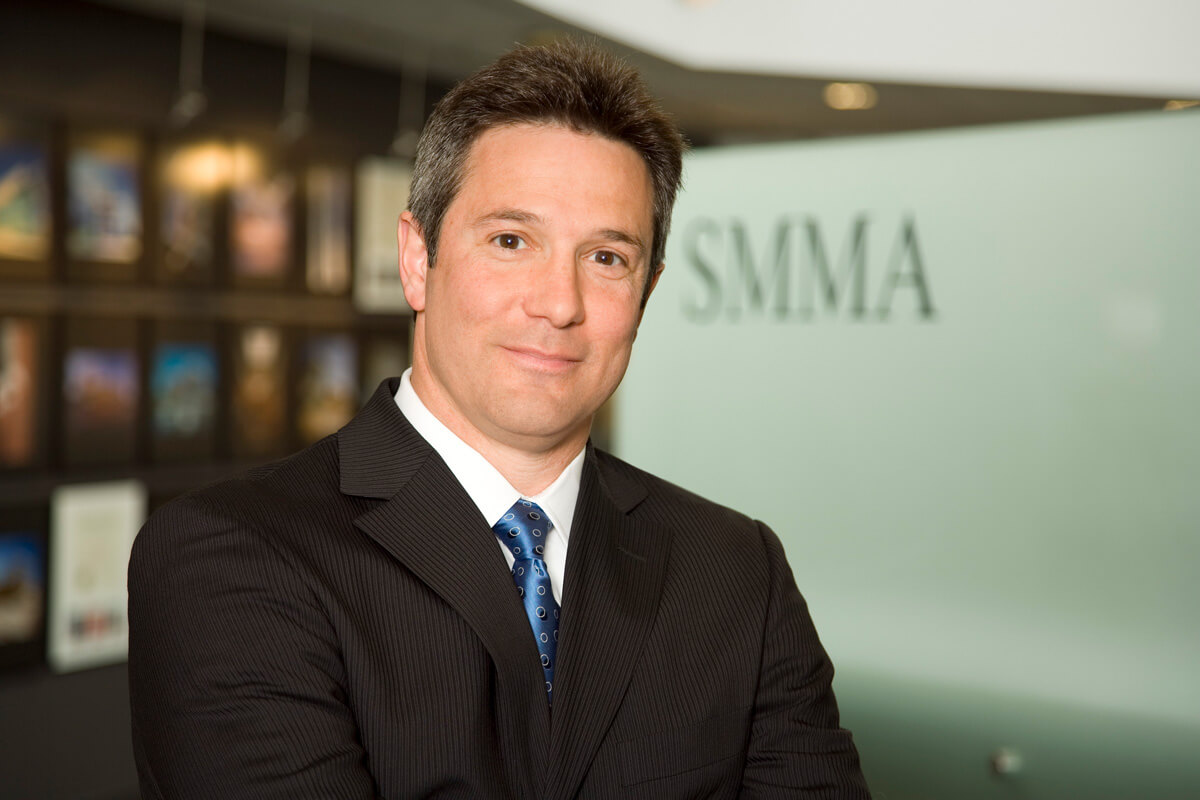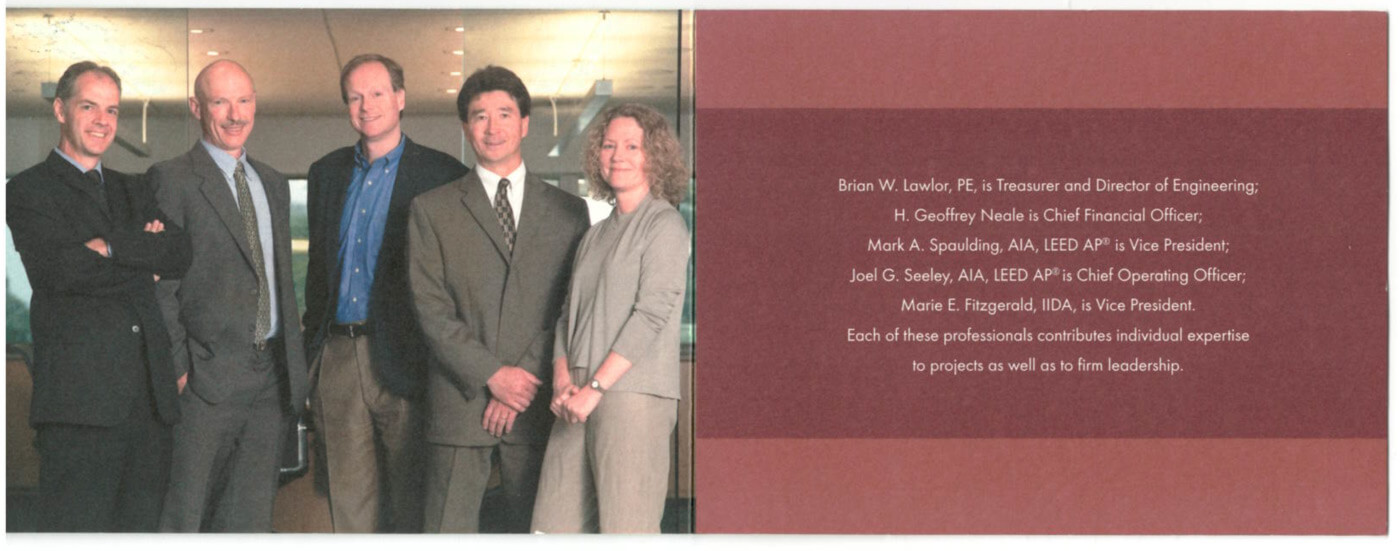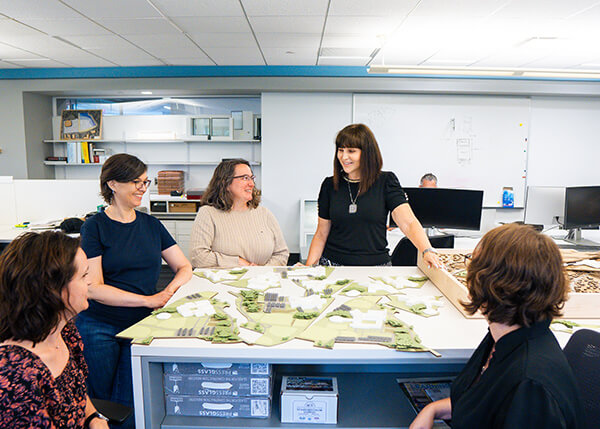History
Since 1955, SMMA has forged extraordinary relationships with clients, established an enviable record of success, and designed award-winning environments. Like every business startup, our firm began with an idea: approaching design through a dialogue of diverse perspectives and professional expertise.
The Launch
SMMA began with a novel idea: approaching building design as an opportunity to integrate diverse perspectives.
The original founders understood the value of bridging technical disciplines to achieve better outcomes—a benchmark gained from their MIT education.
In June of 1955, mechanical engineer Parker Symmes and structural engineer Bill Maini teamed with fellow MIT alum and construction expert Vince Vappi to launch Vappi, Symmes & Maini. It was a familiar group; the trio worked at CCF Engineering Company, a design-build offshoot of a Boston-based developer.
Three years later, Parker and Bill bought out Vince Vappi and continued to work with him on commercial design-build projects for his new construction business. In 1958, architect and Rensselaer grad Jon McKee joined Bill and Parker as a partner. They updated the name to Symmes Maini & McKee Architects and Engineers. Design integration was ready for a beta test with the young, ambitious new firm.
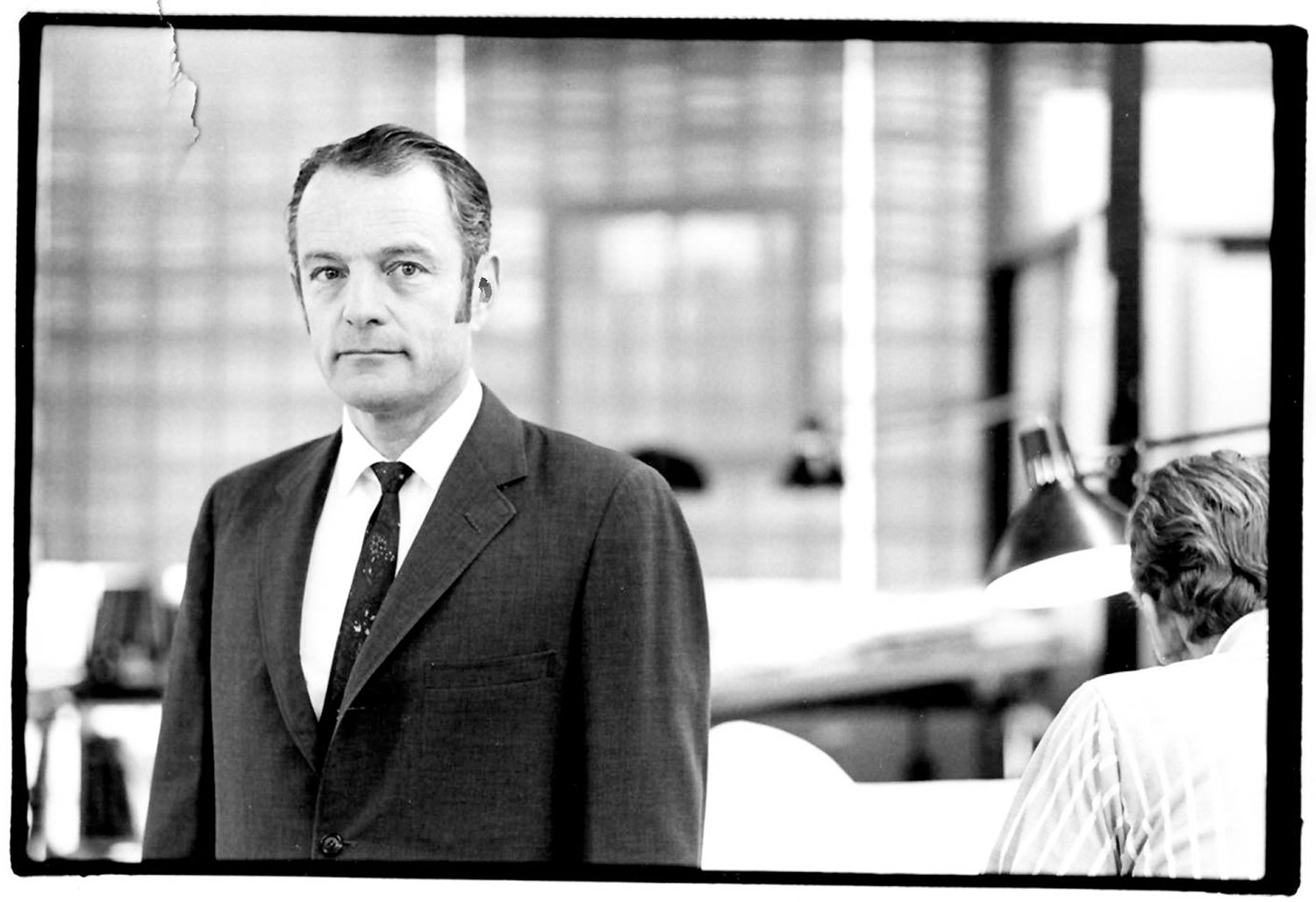
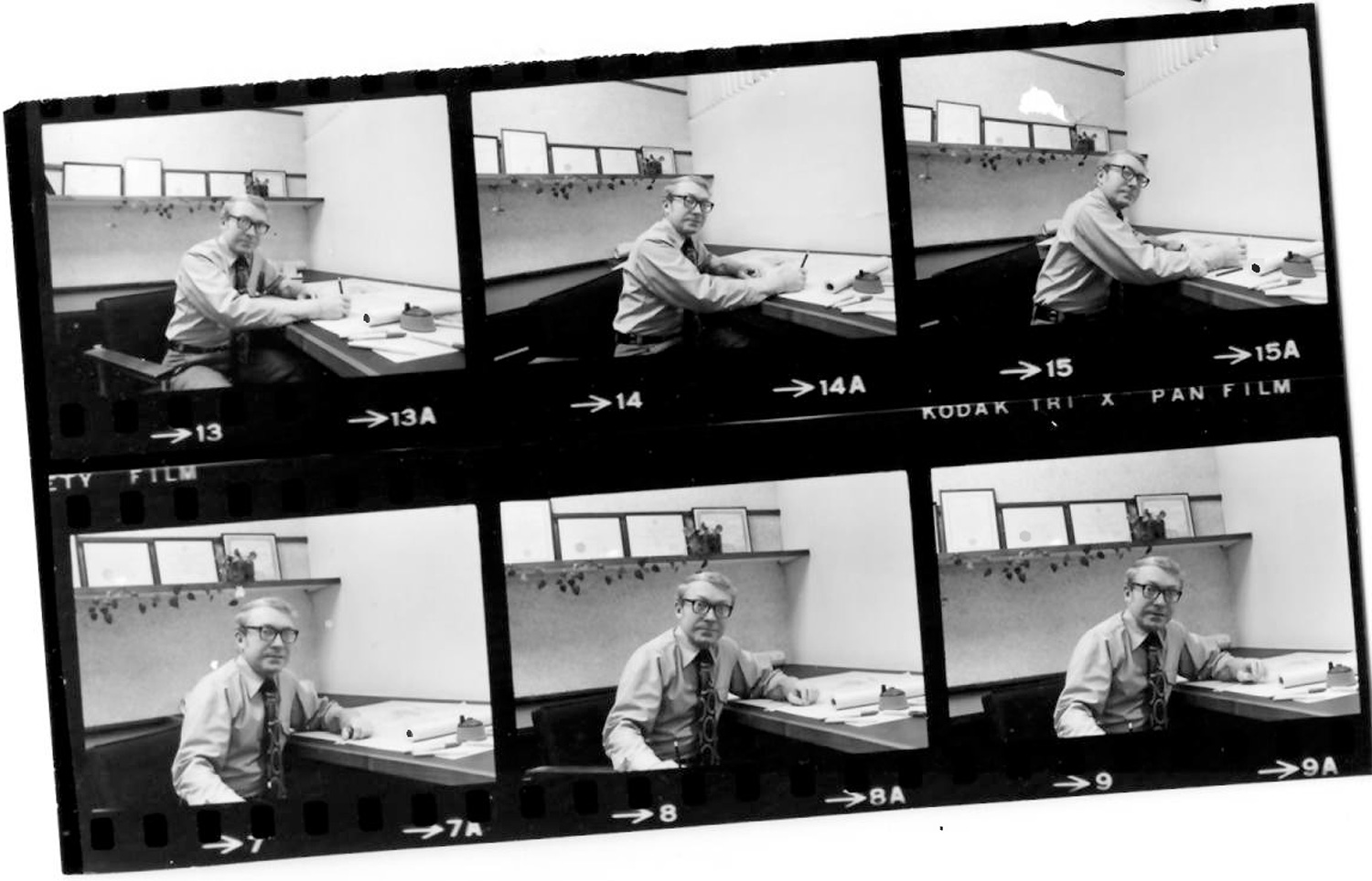
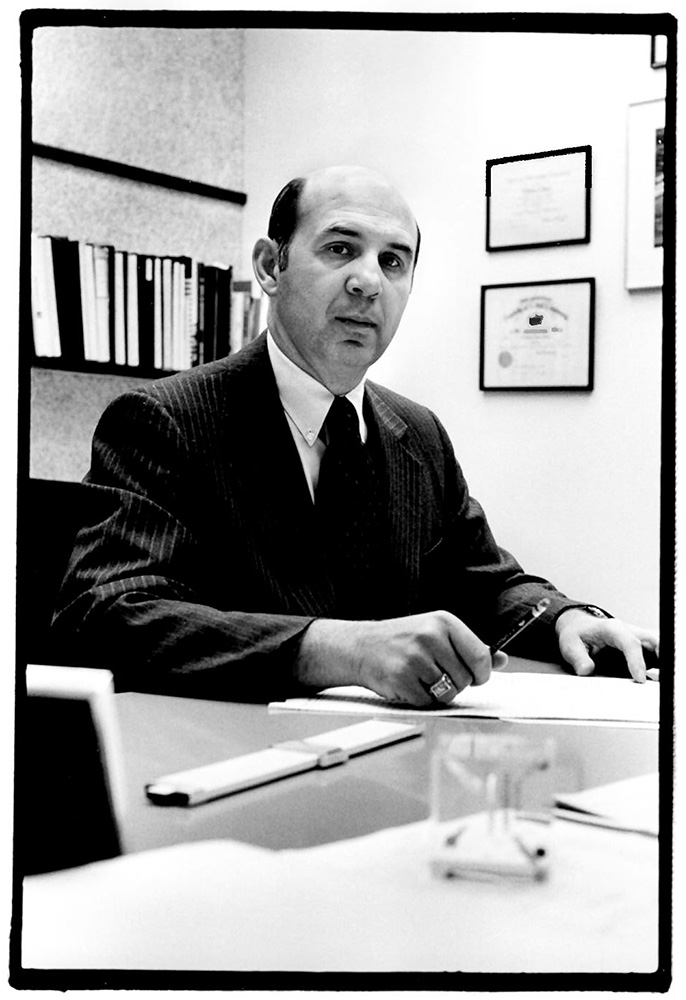
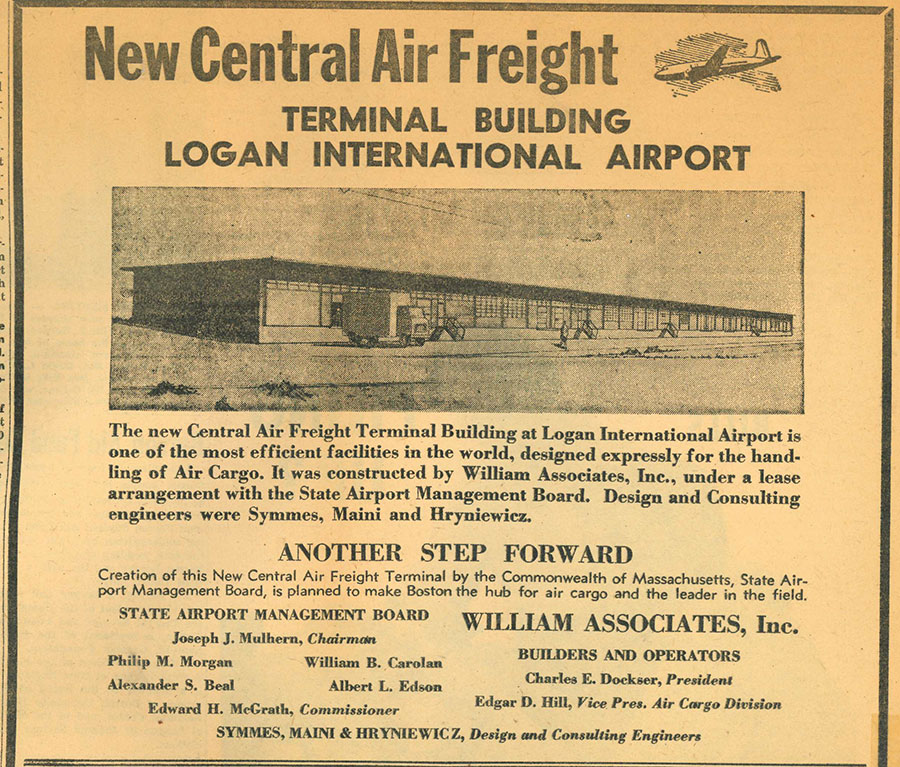
The Lost Partner
|
Bohdan “Chester” Hryniewicz was hired in the early startup period as a structural engineer. He came from the same MIT fraternity as Bill Maini; they made him a partner, adding him (for a while) to the firm name—Symmes, Maini, Hryniewicz, & McKee.
Hryniewicz met Linda Kelly when working together at the firm. They married in 1959. In 1961, the couple moved to Puerto Rico where he led landmark construction projects in San Juan, and later, in Sweden.
He wrote a bestselling book in 2015 on the Nazi invasion of Poland and the 1944 Warsaw Uprising, which he lived through as a boy.

Hryniewicz retired to Sarasota, FL in 1999. He died in April 2023 at the age of 92.
The Growth Years
From the 1960s on, the company grew significantly in workload, people, and project sophistication.
Co-founder/CEO Bill Maini, a true entrepreneur and a natural in cultivating client relationships, led the firm’s expansion. During these formative years, SMMA developed an expertise in planning and designing complex research, education, and industrial environments. Informed by a collective of planners, architects, and engineers working together under one roof, the firm’s early success drew on an ability to apply a cross-discipline view to better understand and integrate client needs.
SMMA won a series of science, learning, and research commissions including a laboratory for the U.S. Fish and Wildlife Service in Gloucester, MA. Additional blue-chip, repeat clients included commercial property developer Boston Properties and Freeport, Maine-based L.L.Bean.

The New Boston Food Market at Widett Circle in Boston, built in 1969. “Thirty-four wholesale meat and poultry dealers were relocated from [. . .] around Faneuil Hall to this 300,000 square foot facility.”
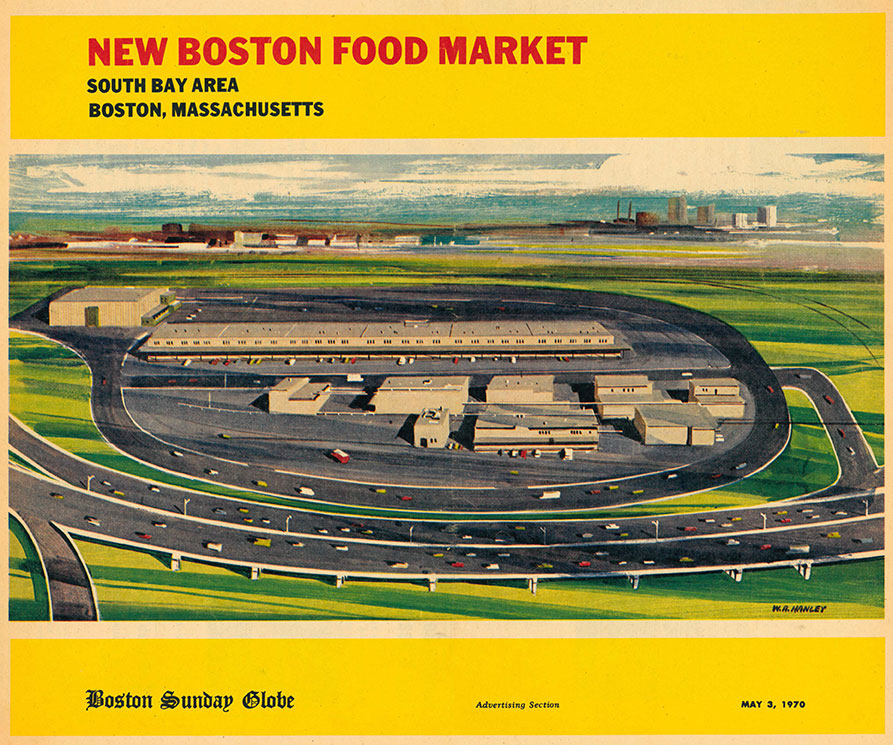
Advert in the Boston Sunday Globe, 1970
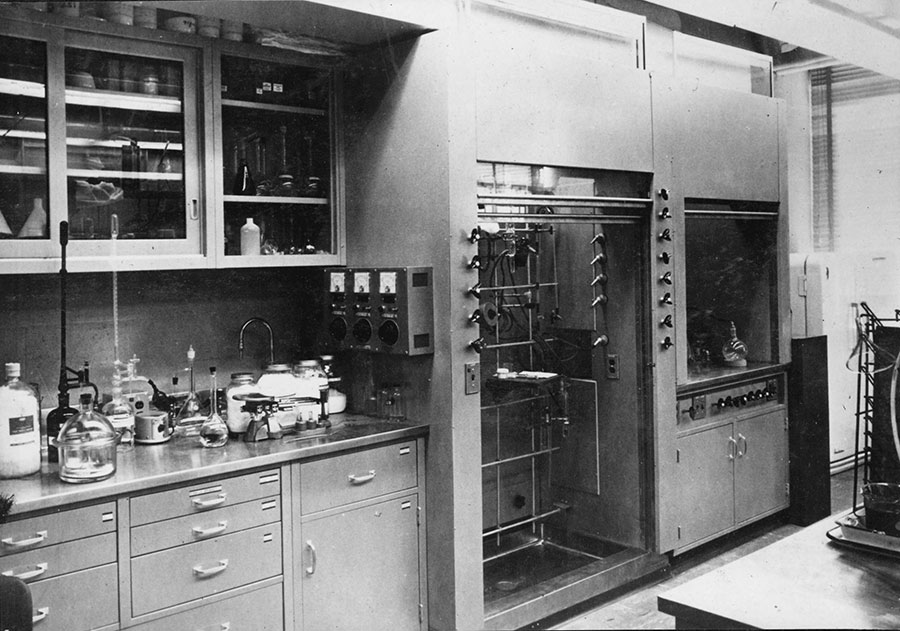
Laboratory at Cabot Corp in Billerica, MA “devoted to new products research for the world's largest manufacturer of carbon black”
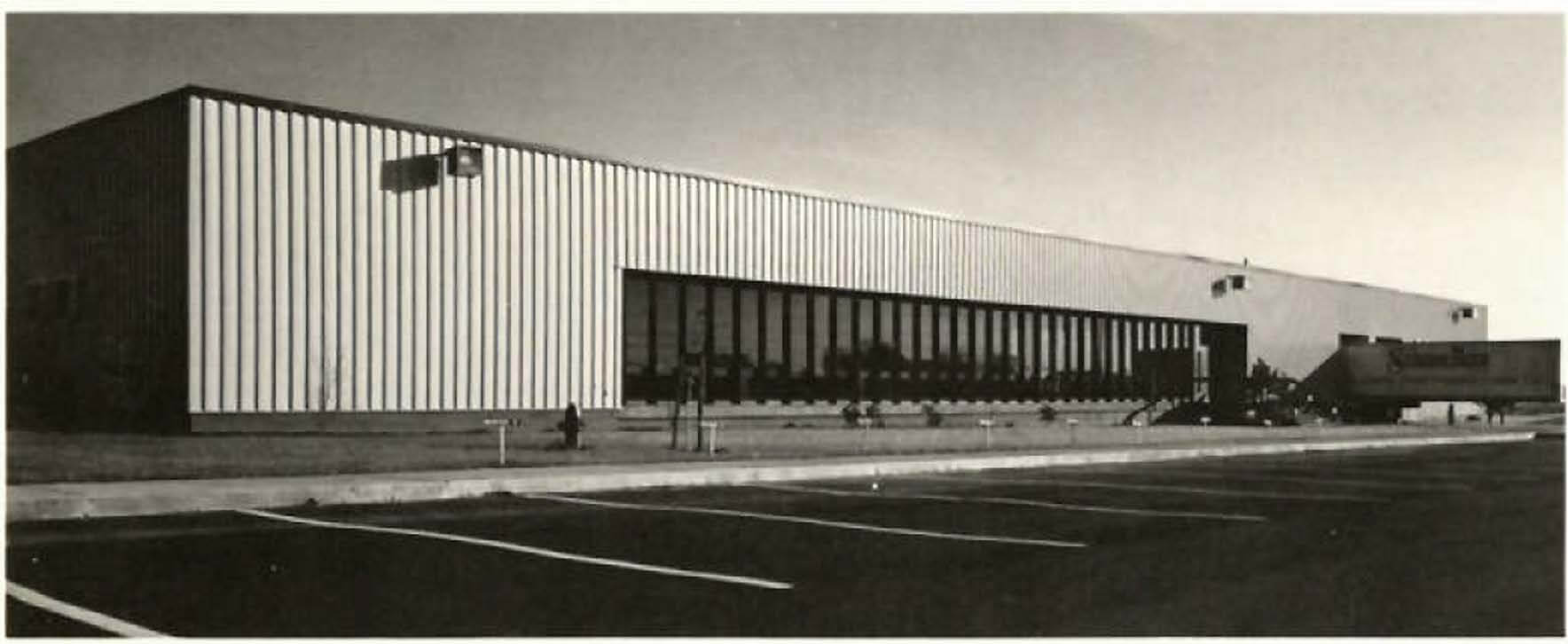
Green Shoe Manufacturing Co. in Newburyport, MA, a facility for the production and distribution of Stride-Rite Shoes
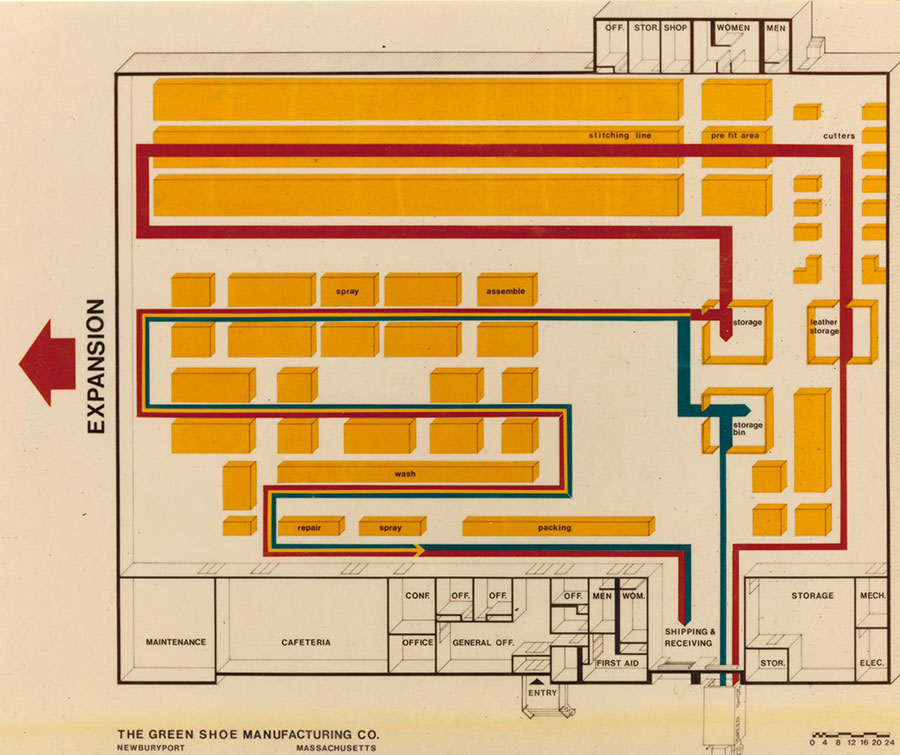
Production flow at the Green Shoe Manufacturing Co.
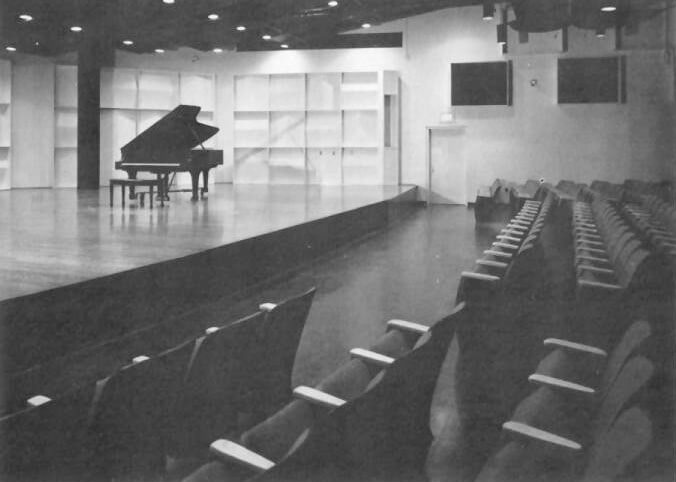
Boston University Concert Hall, 1972. “The reconstruction of this 500-seat concert hall after a major fire included the redesign of all acoustical devices, replanning of the backstage facilities, and the addition of a projection booth and new audio-visual facilities.”
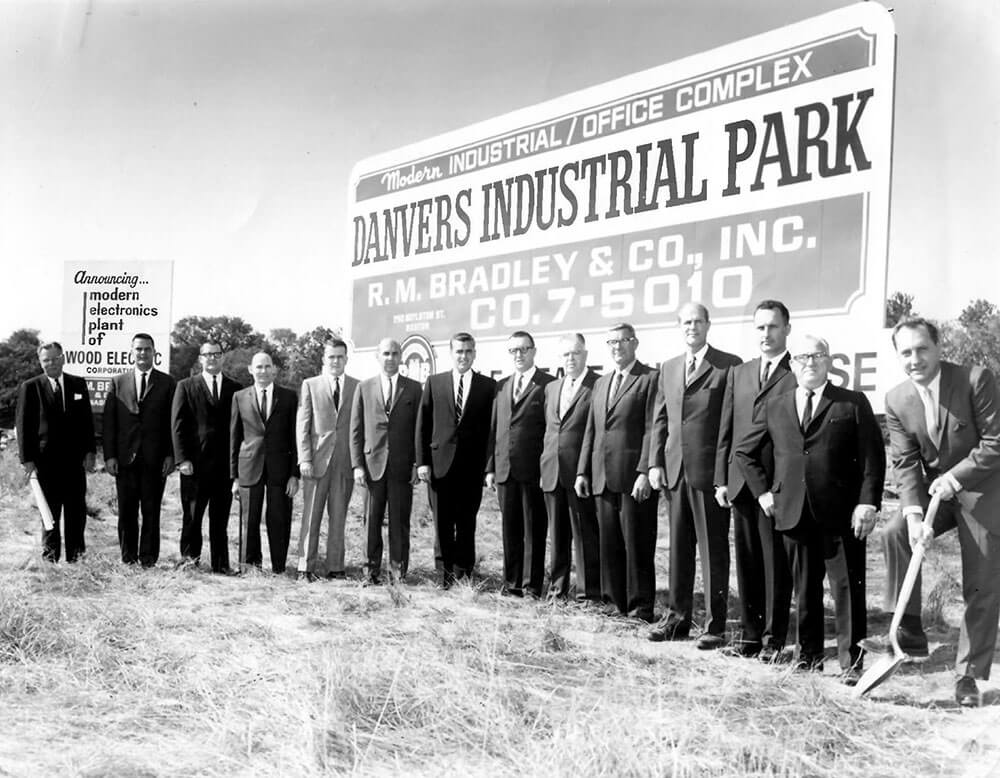
Groundbreaking at Danvers Industrial Park, late 1960s. “A master development plan for a 56-acre industrial park and the design of a new manufacturing plant for Wood Electric Corporation.”
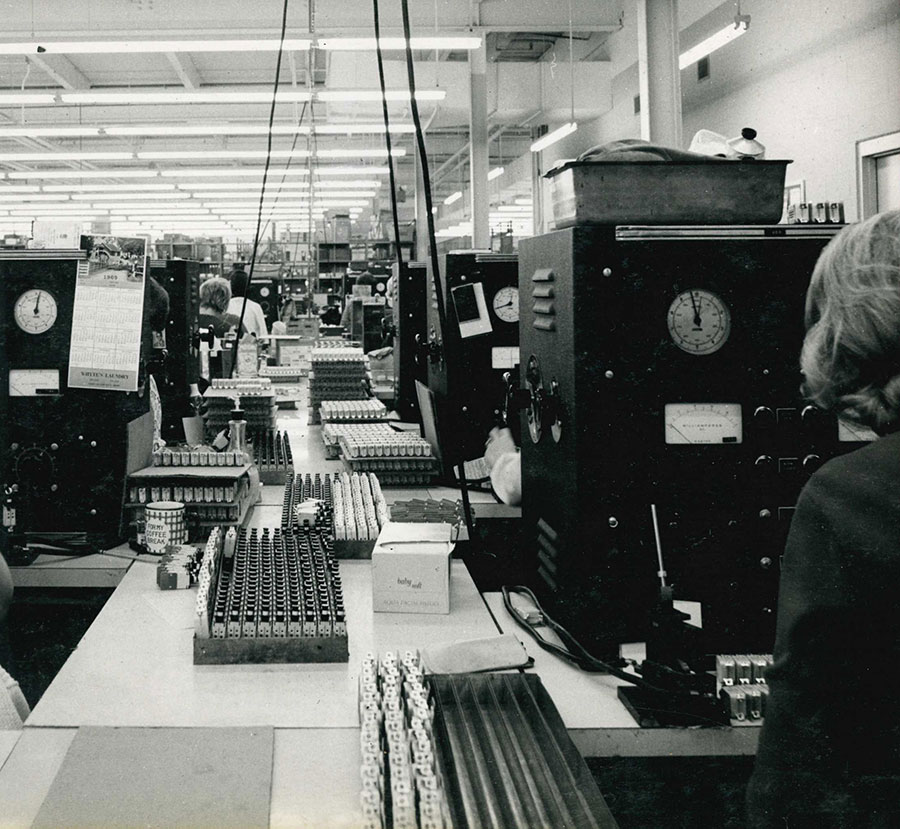
Inside the Wood Electric Co. manufacturing building at Danvers Industrial Park, 1969
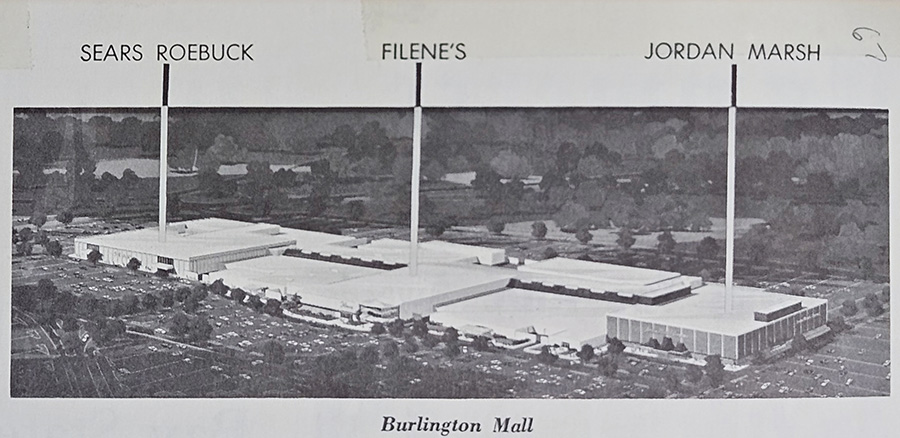
Design for the Burlington Mall in Burlington, MA, built in 1968
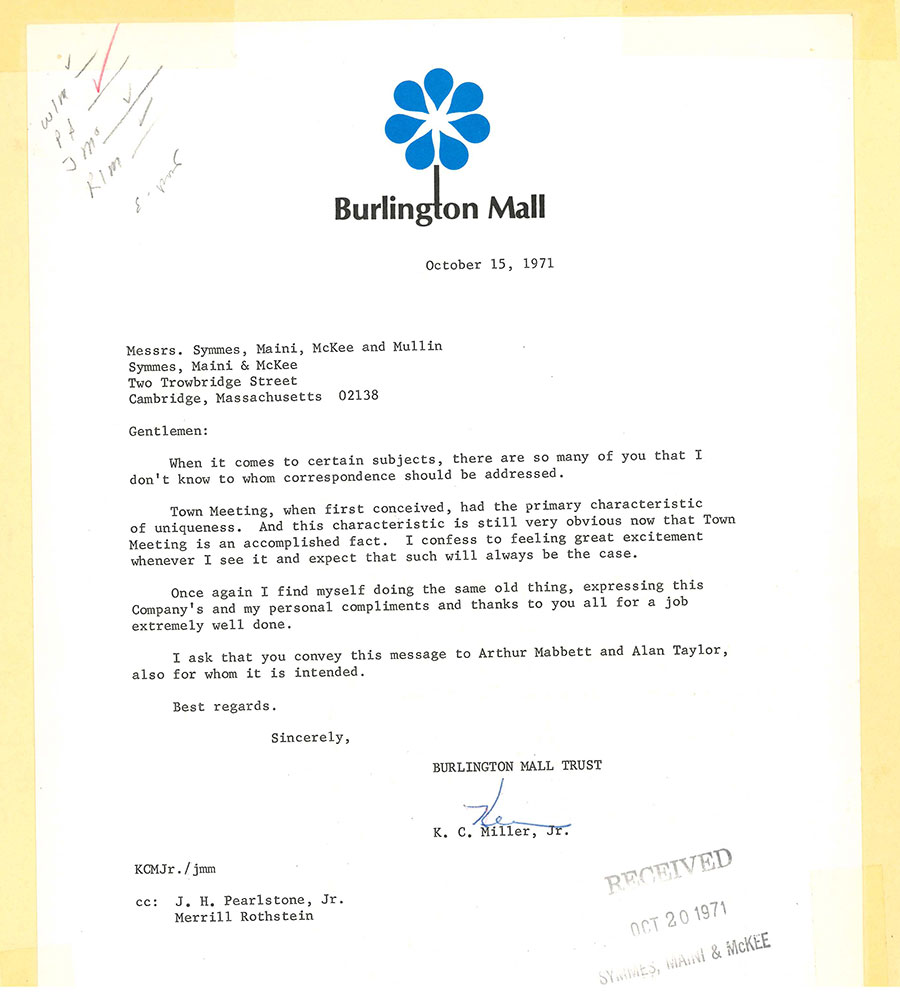
Burlington Mall: a happy client
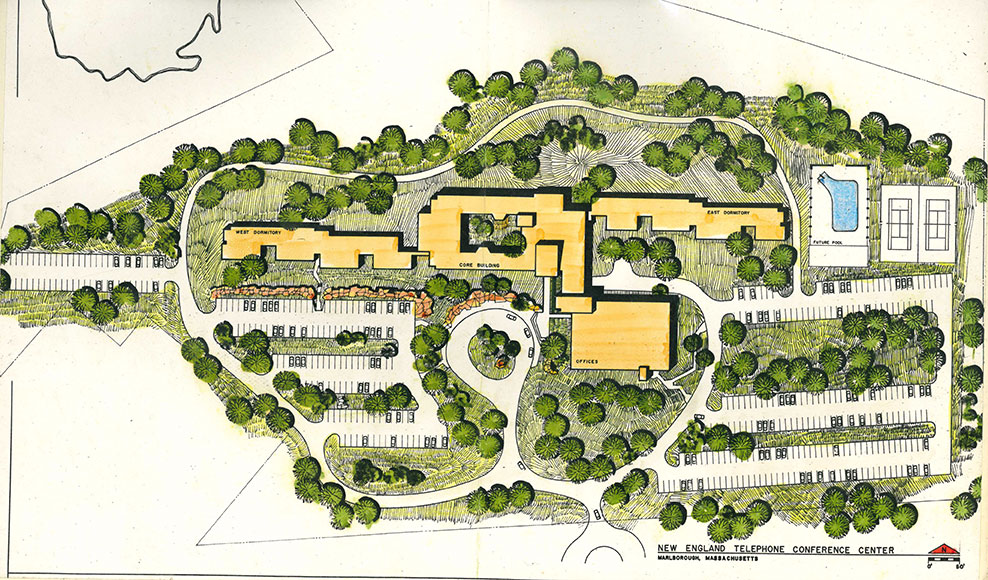
Site plan for the New England Telephone Conference Center in Marlborough, MA, built in 1973
Design Evolution
A Design distinction emerged as a key criterion for selection during the late 1970s and early 1980s.
Clients wanted to stand out via places that helped boost brand presence and support recruitment. SMMA responded by expanding its design talent, pursuing higher-profile projects, and establishing an interior design practice.
Architect Tom Vogel joined the firm in 1978 from Shepley Bullfinch to lead the architecture group. Working with Bill, Jon, and Parker, Tom reshaped the design process by making key hires, mentoring young designers, and celebrating design excellence.
It was a well-timed investment. In hyper-traditional New England, public perception of design was changing. “Boston architecture was universally known for brick buildings and understated design,” recalls Vogel. “The city in the seventies and eighties came into its own with modern designs for City Hall, the John Hancock Tower, the Christian Science Center, and the JFK Library.”
Early Marketing Leadership
|
Design firms were late to adopt modern marketing practices. Why? For most of the 20th Century, the American Institute of Architects (AIA) famously barred its members from overt marketing or advertising activities.
Bill Maini, an entrepreneur and strategic thinker, saw the opportunity to advance by being among the first in the industry to break this antiquated tradition.
He retained an advertising firm to produce and distribute a client newsletter. He built a database, hired marketing professionals, and budgeted for print and photographic resources to expand SMMA’s visibility and reputation.

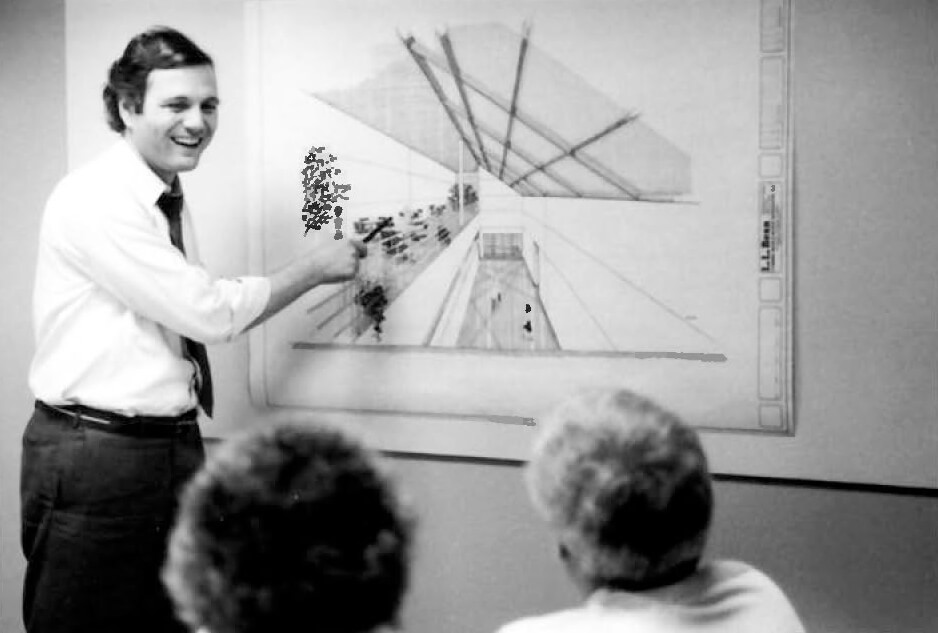
Architect Tom Vogel led the charge in elevating SMMA’s design excellence in the late 1970s and 1980s
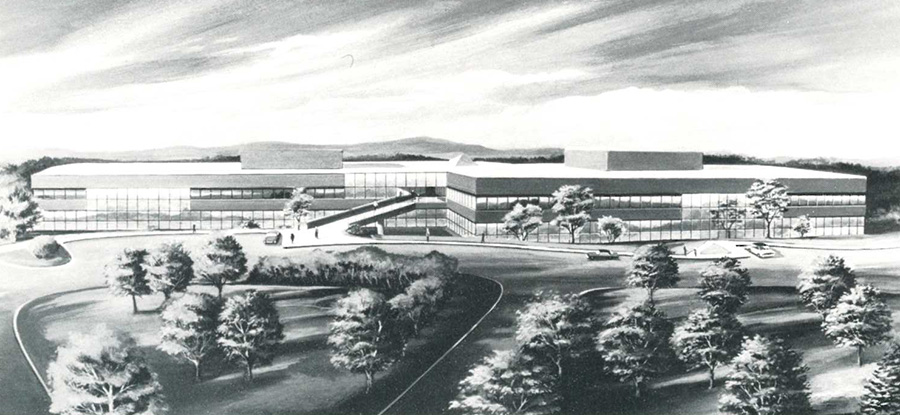
Design for office and R&D campus for Metropolitan Insurance Companies in Tewksbury, MA, 1983
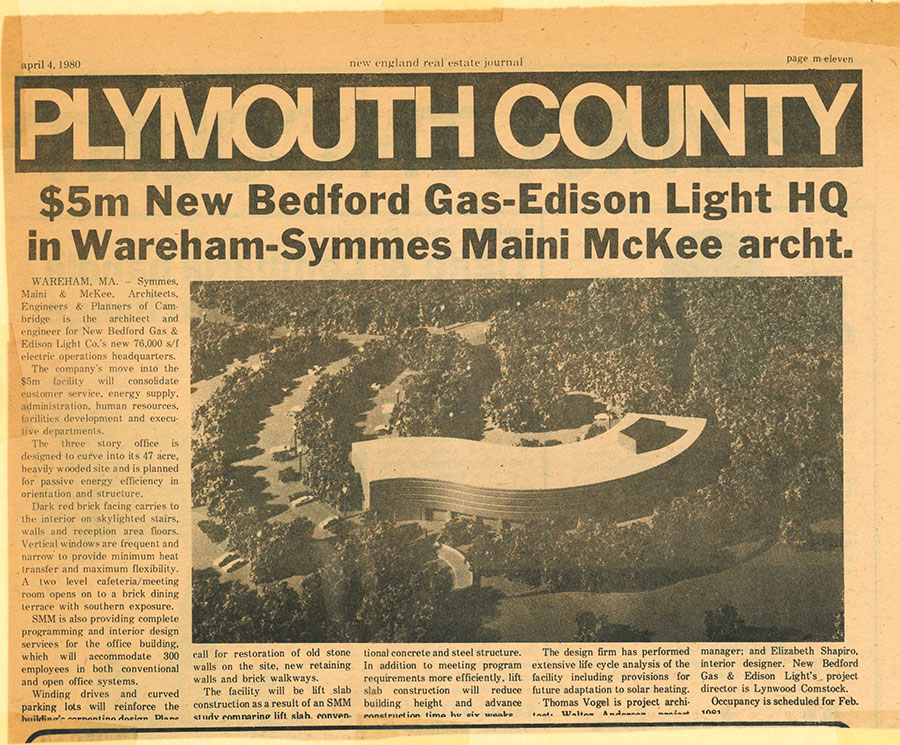
New Bedford Gas-Edison Light HQ in Wareham, MA, 1980
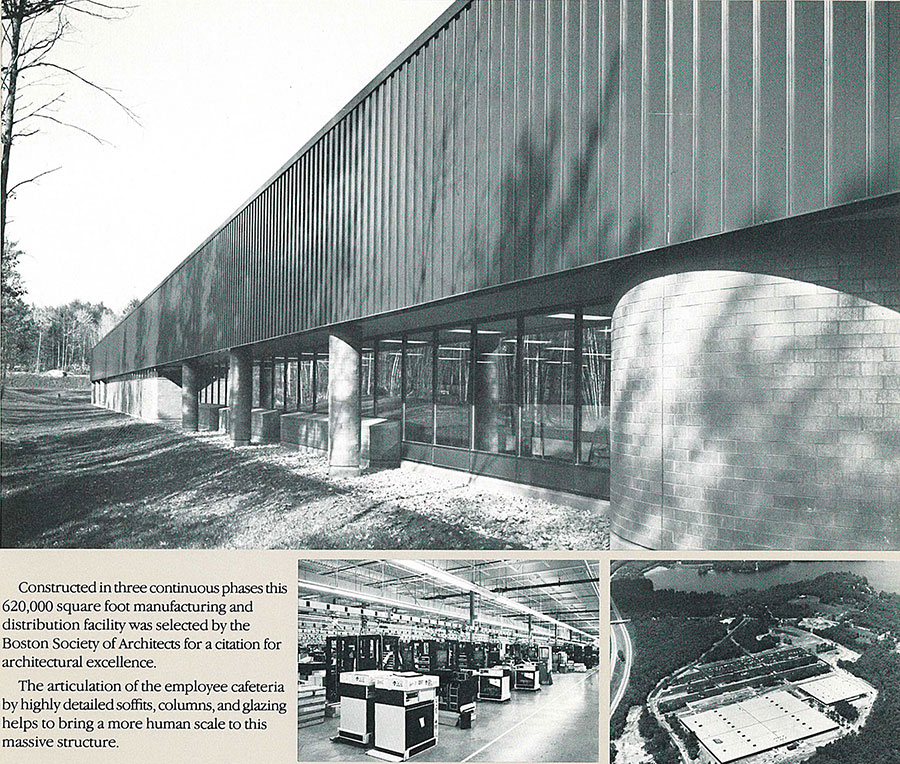
Before there was Apple, there was Digital Equipment Corporation. This 620,000 square foot facility in Salem, NH was home to the manufacture of the company’s famed “microcomputers”
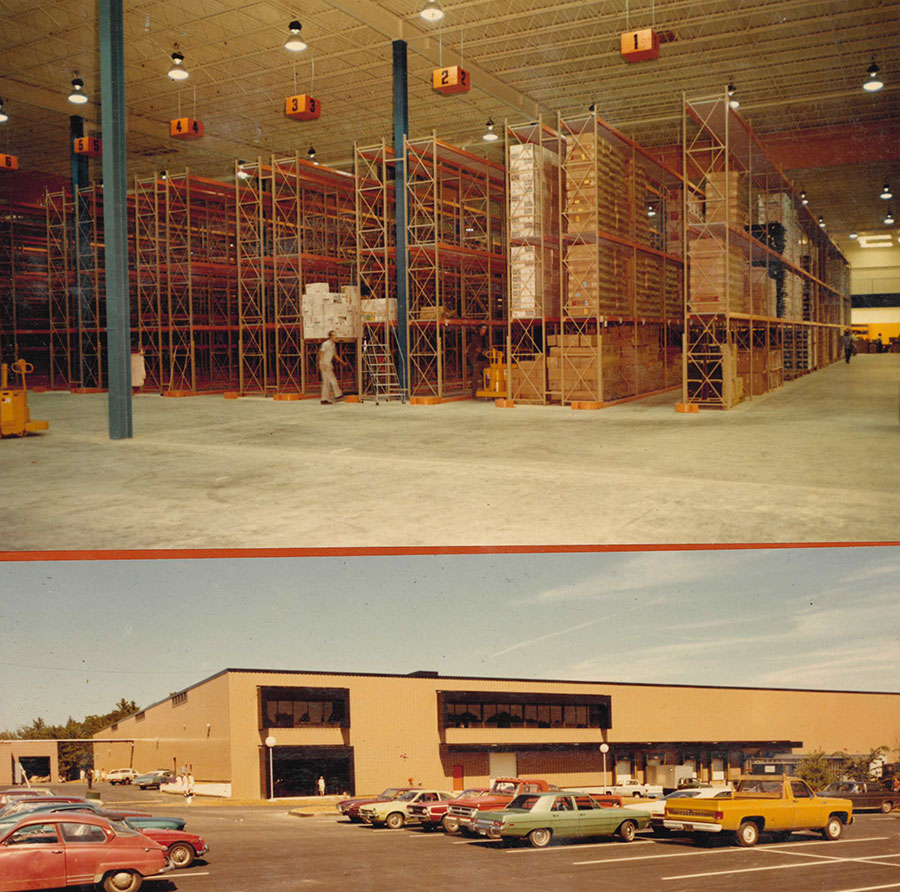
L.L.Bean distribution facility in Freeport, ME, opened in 1974
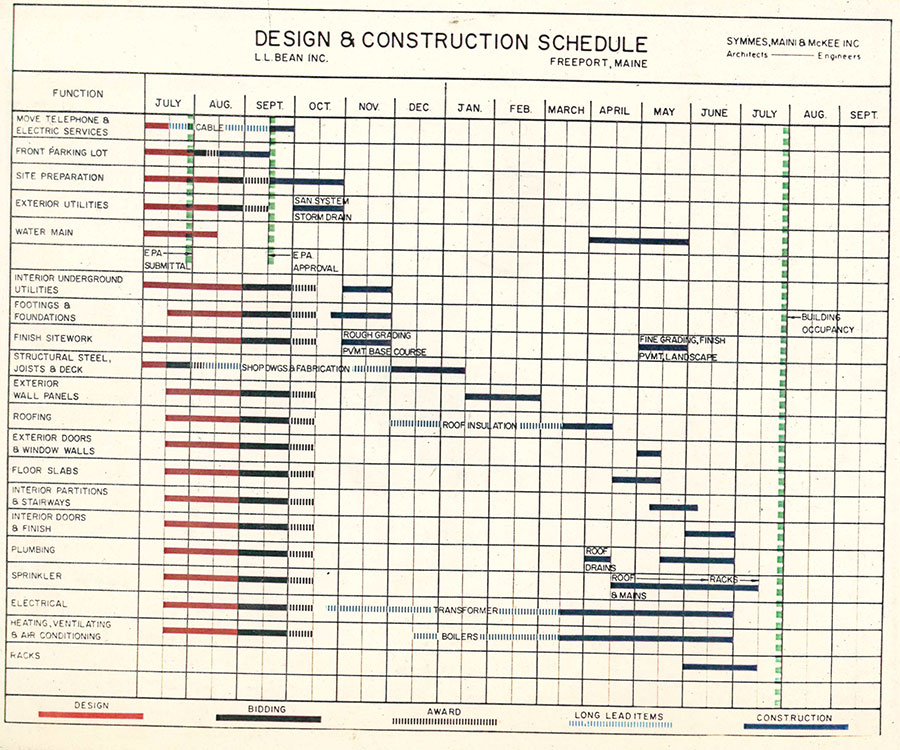
Design and construction schedule for an early L.L.Bean project
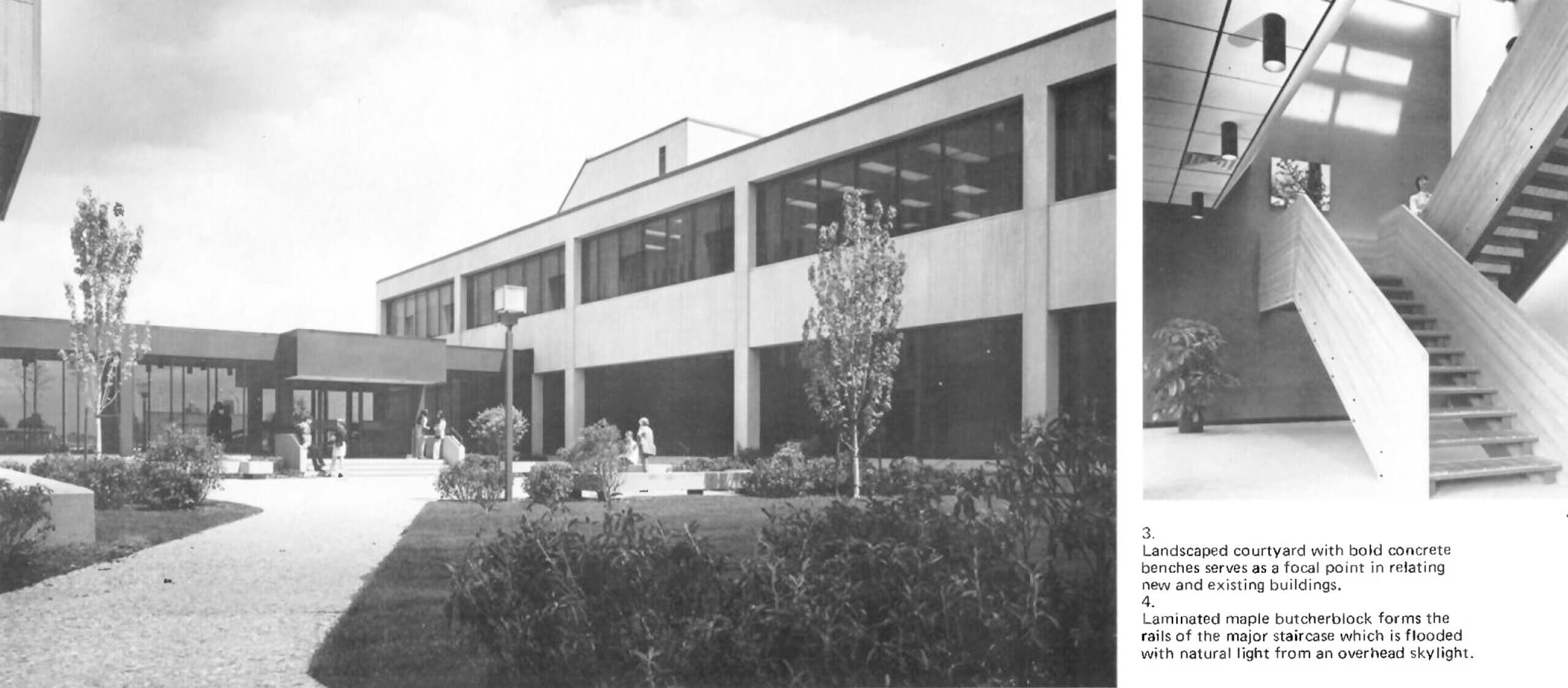
Major expansion and addition to the First National Bank of Boston Data Processing Center in Dorchester, MA, 1979
“To be consistently great across all design disciplines, you need to develop a culture to support it.”
Tom Vogel, AIA
Tech, Science, & R+D
Beginning in the late 1970s, tech companies were rushing to meet the global demand for microelectronics components manufactured in cleanroom environments.
SMMA’s experience designing clean environments at MIT, including a pioneering new plasma fusion facility, combined with its integrated team model, met the need.
“Speed to market was the driving force for companies such as IBM, Cherry Semiconductor, and Analog Devices,” recalls Michael Powers, who led the firm’s Advanced Technology practice at the time.
Technical sophistication in science, technology, and science facilities led to a decades-long relationship with Waters Corporation, a research and scientific instrument manufacturer. SMMA master planned and designed the majority of Waters’ headquarters campus in Milford, MA, providing spaces to support the company’s growth and success: clean manufacturing, research labs, and office environments.
At the center of the high tech and controlled environments practice were Powers, who would later become SMMA’s third CEO, Mario Loiacono, a legendary mechanical engineer who joined SMMA from Digital Equipment Company, and SMMA co-founder Parker Symmes.
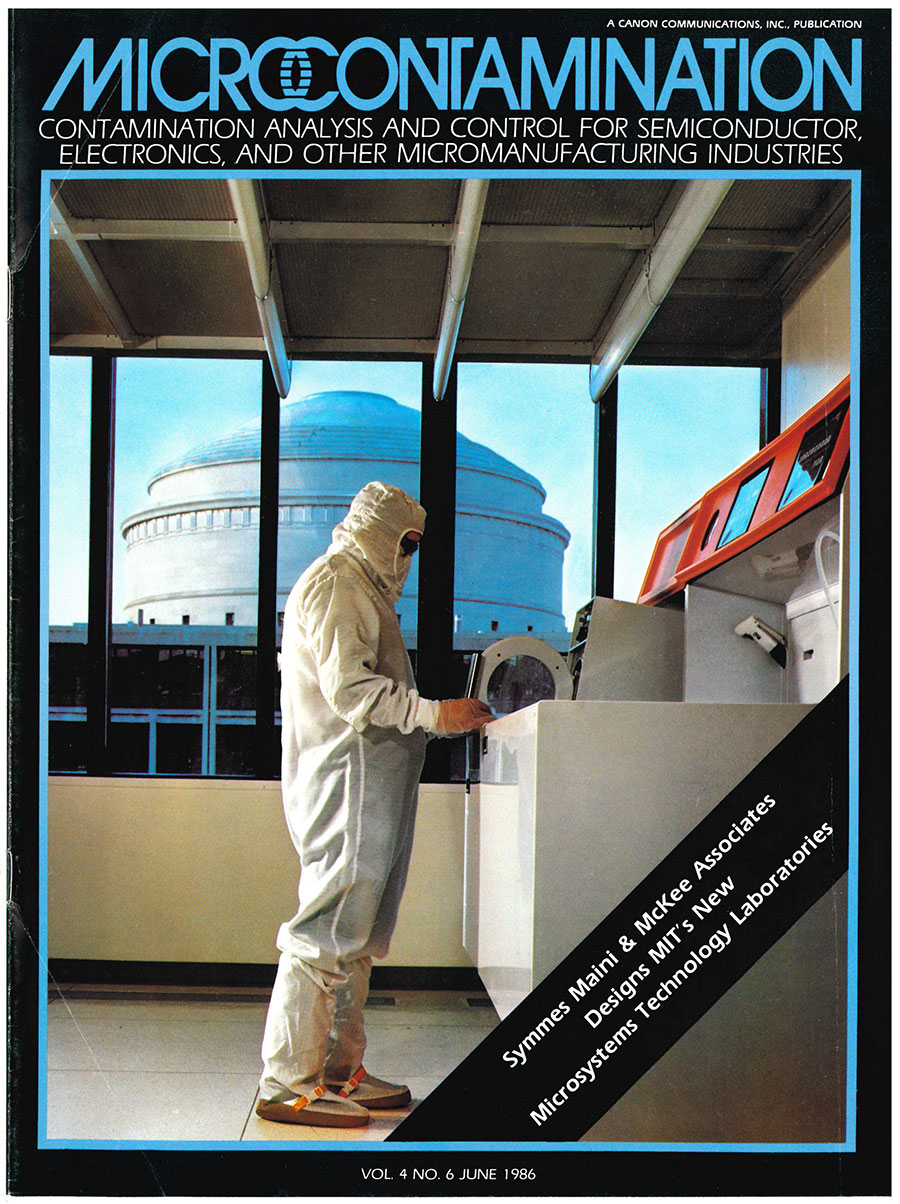
MIT Microsystems Technology Laboratories, the first Class-10 cleanroom for semiconductor research when being planned in 1980
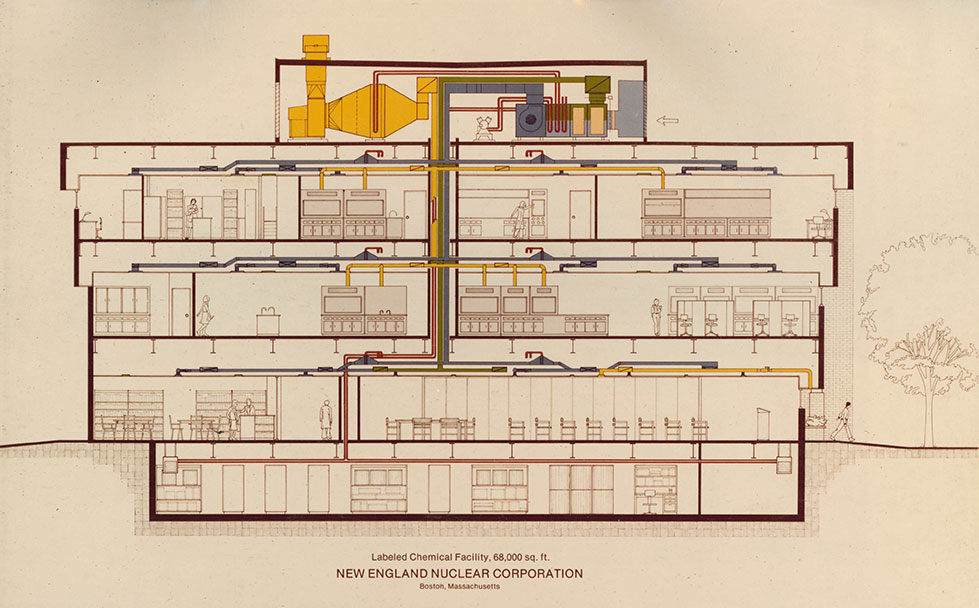
New England Nuclear/Radiochemical Production Laboratory in Boston. Awarded ‘Laboratory of the Year’ in 1980 by Industrial Research & Development Magazine
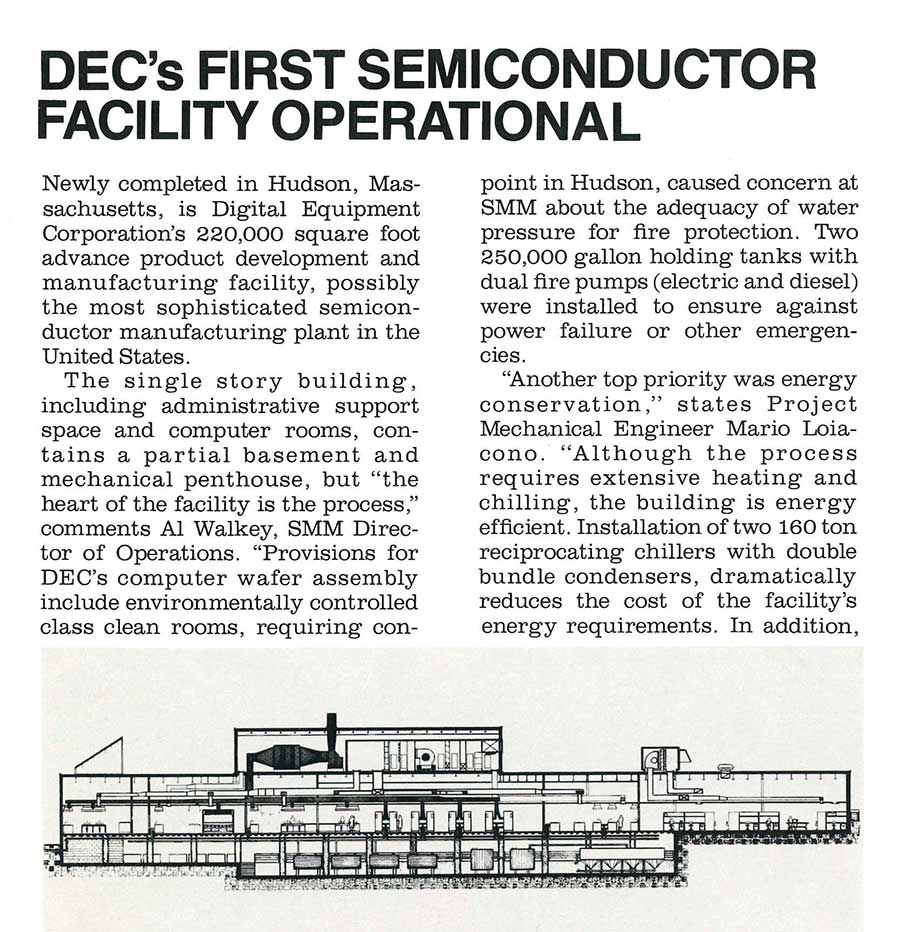
Digital Equipment Corporation Semiconductor Manufacturing Facility in Hudson, MA
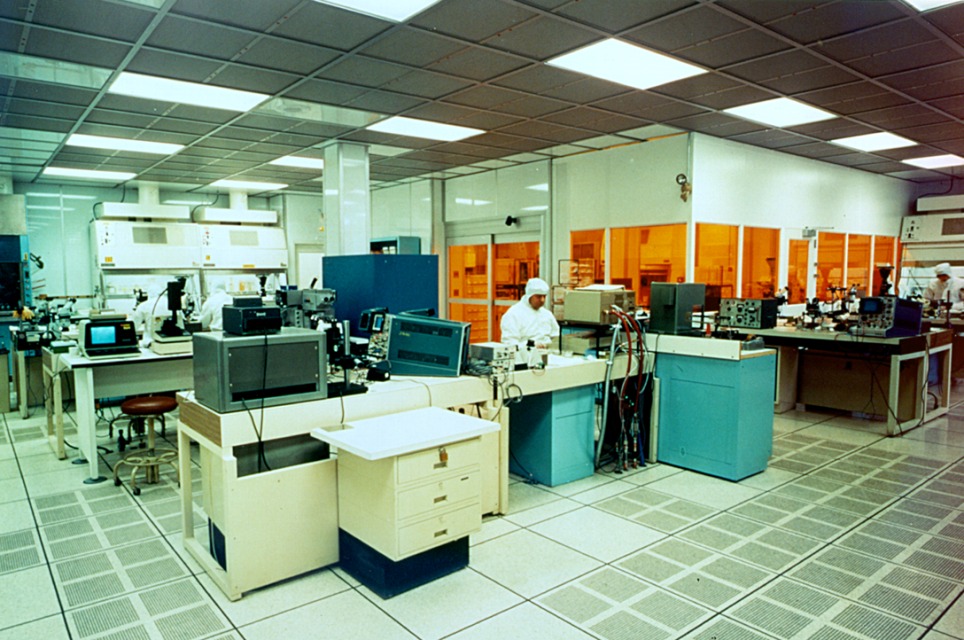
MIT Lincoln Labs in Lexington, MA, 1988
“Speed was our strength with all the key disciplines in one company. We could plan, schedule, and execute the work quickly with the precision needed to bring facilities online.”
Michael Powers
Succession & Rejuvenation
SMMA’s founders began a strategic leadership and ownership succession in 1988 and 1989.
This included appointing Tom Vogel, who was leading the architecture group, as the firm’s second president. Senior VP Michael Powers and Executive VP Mario Loiacono rounded out the new leadership group.
Parker stayed on after transitioning out of firm ownership, continuing to follow his passion for mechanical engineering design. He worked for another 16 years at SMMA.
Bill retired, while Jon continued a close association with the firm in semi-retirement. He kept an office at 1000 Mass Ave., working on occasional projects and running the travel scholarship program, the Lyceum Fellowship, a nonprofit he founded in 1985. The Lyceum volunteer directors continue to award scholarships to architecture students each year.
Other developments during the 1980s through the mid-1990s included:
- Acquiring a successful K-12 design firm, Pierce, Pierce & Kramer in 1991, and creating a new practice area to meet the growing demand for new K-12 schools
- Expanding technology, clean room, and mission-critical design expertise nationally with projects in Colorado Springs, CO, Chaska, MN, and Mountaintop, PA
- Opening a Minneapolis office and acquiring Winsor/Faricy Architects, a St. Paul-based firm
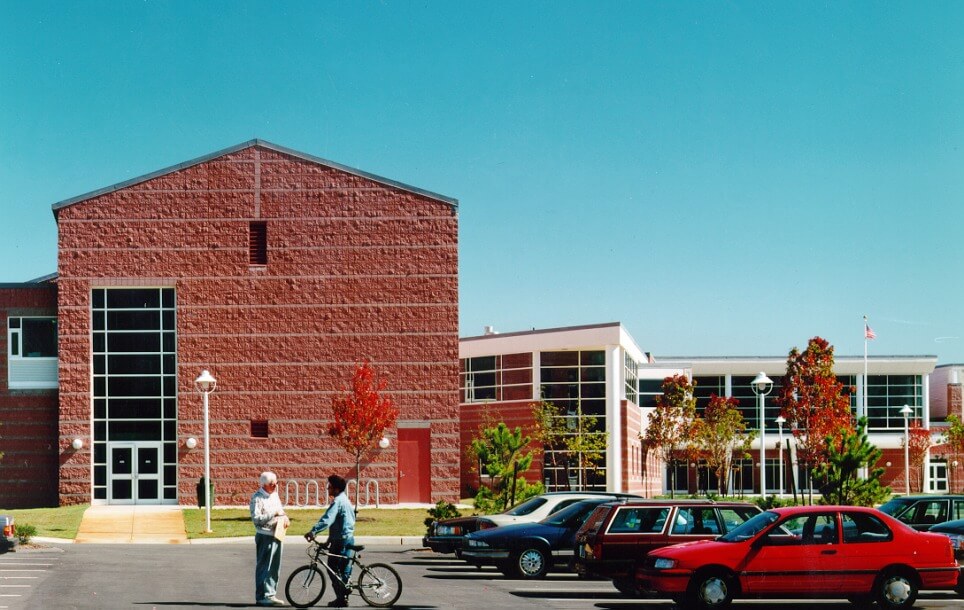
Mashpee Middle-High School in Mashpee, MA, 1996
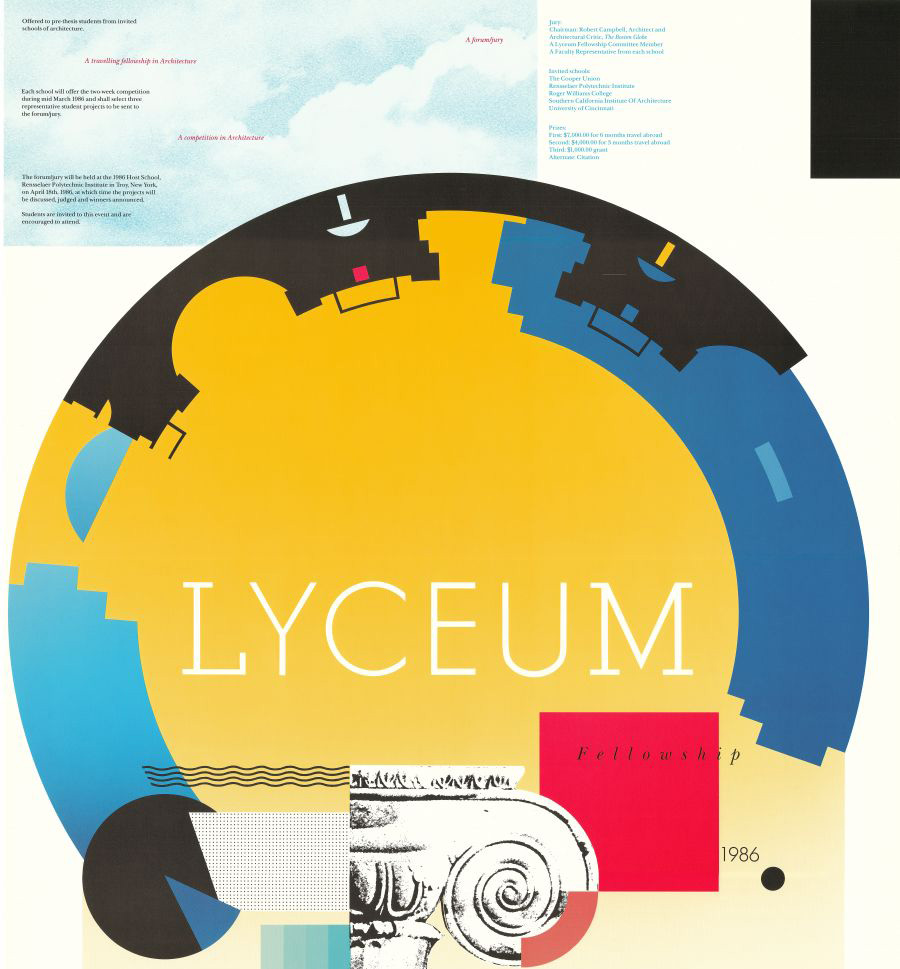
Promoting the inaugural Lyceum Fellowship in 1986, “a travelling fellowship in Architecture” founded by Jon McKee
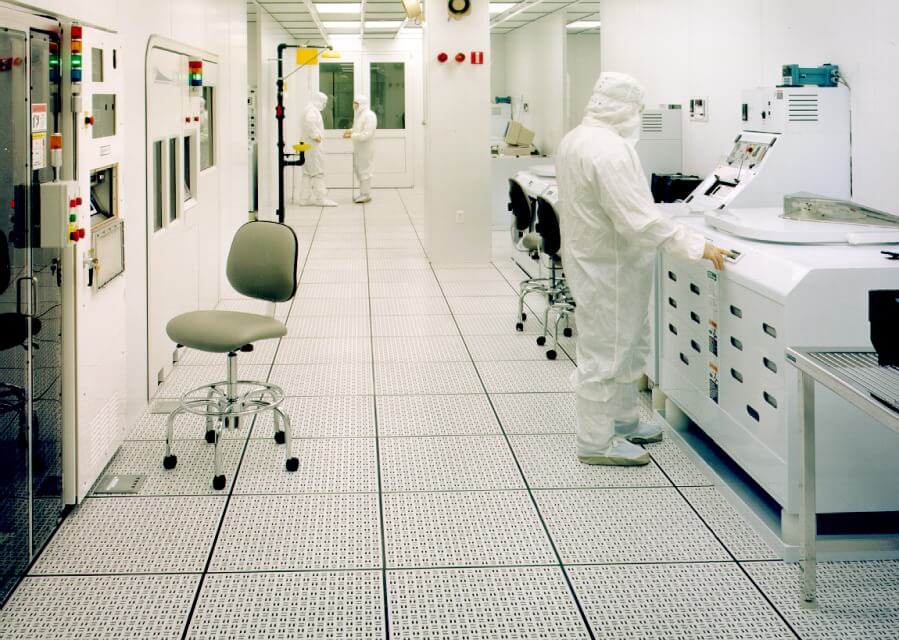
Cleanroom for FSI International in Chaska, MN, 1995
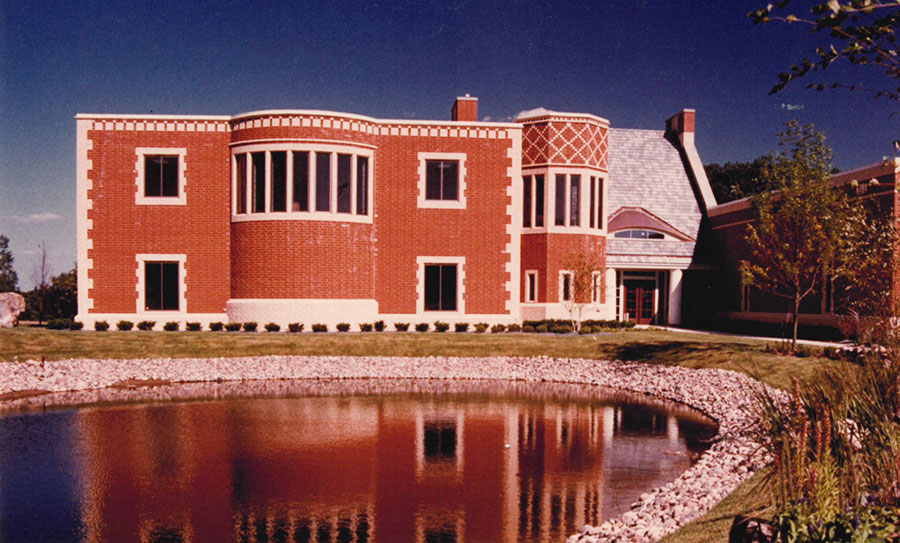
ViroMED Laboratories corporate HQ in Eden Prairie, MN, 1994, featuring Biosafety Level 3 labs, cleanrooms, and cCMP areas. “The client, an admirer of English architecture, requested [. . .] a building with human scale and refinement.”
New Tools & Practices
The adoption of new technologies and the speed-to-market nature of the work required a new look at the potential for process and practice improvements.
A group of emerging firm leaders came together to continue to advance the benefits of a design collective. The decision to adopt ISO 9001, an internationally recognized set of quality management standards and benchmarking, became a game-changer in improving the design process and reducing risk.
An internal team translated the ISO standards to a design firm, and subsequently developed the company’s first internal Quality Plan that would pass the annual rigors of ISO 9001. By adopting ISO protocols for process integrity and quality control practices, SMMA achieved certification in record time in 1998. This commitment to ISO standards continues today, providing a distinctive and measurable advantage to clients and staff.
Throughout this reinvention period, the firm also advanced standards and practices for design excellence in interior design, site design, and master planning. These disciplines, while not new to SMMA, were now crucial core services elevating the multidiscipline model for clients.
Consequently, the firm in the early 2000s was able to compete for the most desirable clients and projects. New clients selecting SMMA included knowledge-based technology, life science, and manufacturing companies such as Boston Scientific, Wyeth, Bose, Philips Medical Systems, and Draper.
ISO 9001 Illustrated: SMMA at KA Connect 2019
|

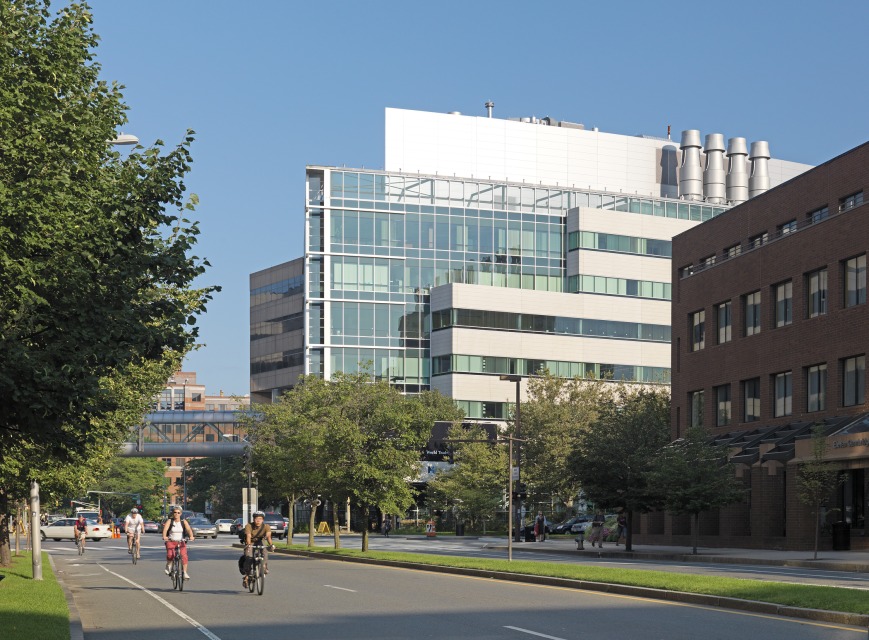
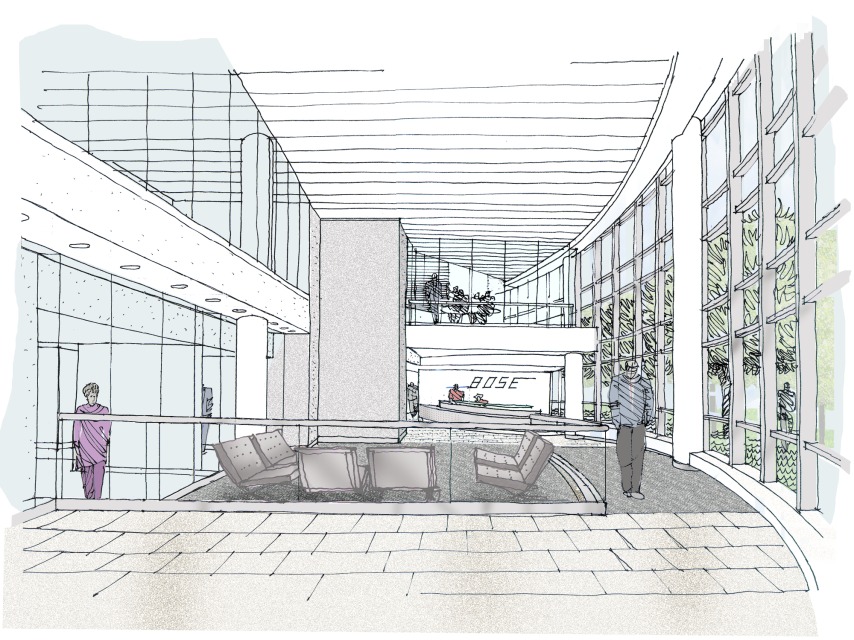


“The way we worked on projects shifted to fully embrace collaborative tools and practices. This was true both internally within design teams and externally with our clients. Cool new modeling and BIM design tools were helping move the dial. But it was the human aspect of people, seizing the possibilities and taking things to a higher level of integration.”
Learning Environments
During the 1990s and into the 2000s, SMMA’s education work ascended.
During the 1990s and into the 2000s, SMMA’s education work ascended. In December of 1993, the firm’s fledgling K-12 practice teamed with a national design firm to jointly design three large public high school projects, including the award-winning Chelsea High School. School designs for Marblehead, Quincy, Andover, and other Massachusetts communities followed. Design integration, with its capacity for collaboration and group problem solving, became a competitive advantage in education design. Educational planning went beyond architecture to encompass all disciplines and the communities served.
Higher education expanded simultaneously, with laboratory science buildings for the University of Maine/Orono and the University of Southern Maine, and residence halls at Endicott College and St. Joseph’s College. In May of 2001, Hoskins Scott & Partners merged with SMMA. This brought renowned architect John Scott into the firm, adding significant higher education, campus planning, and health science expertise. John and his team developed a multiple-project client relationship with Providence College that continues today.
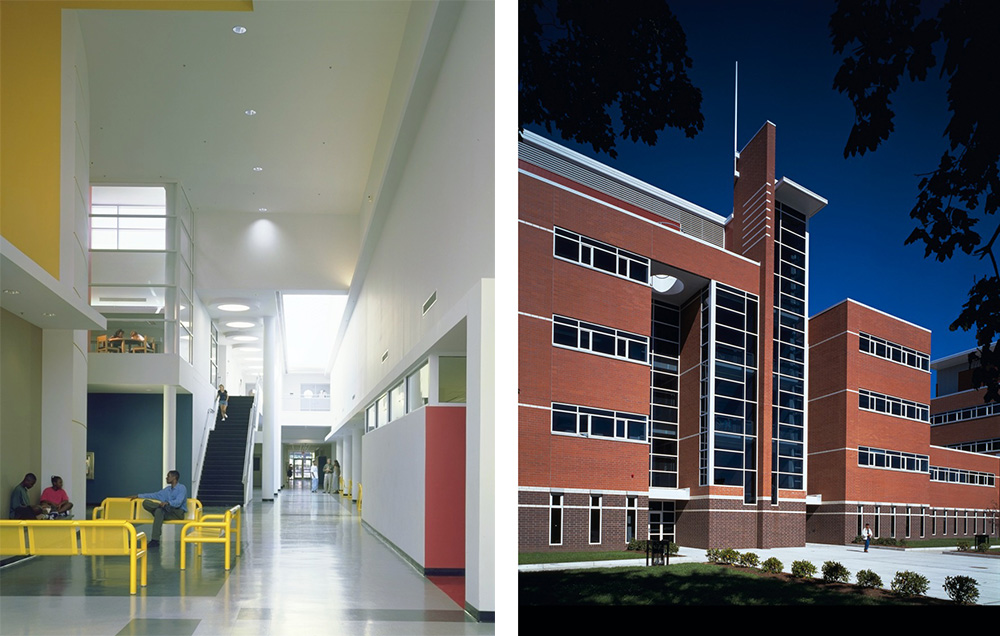
The award-winning Chelsea High School in Chelsea, MA, opened in 1996
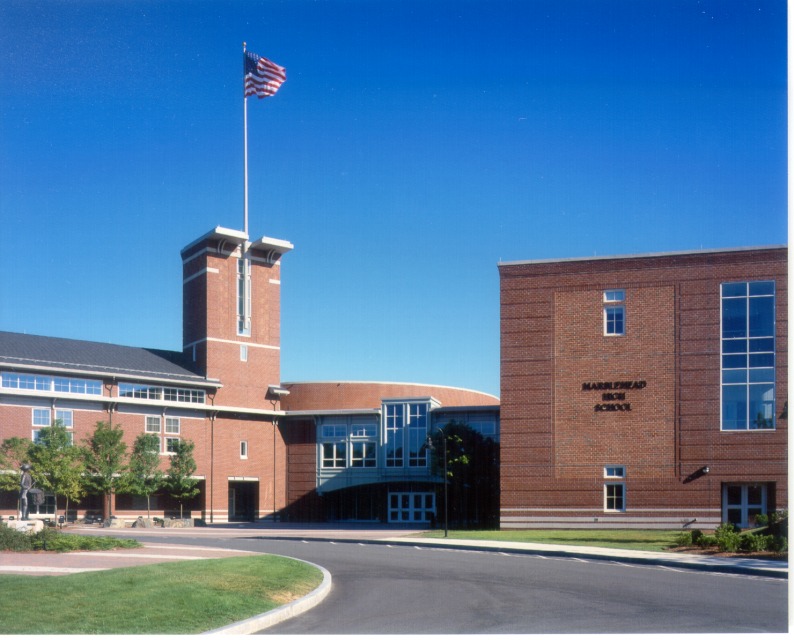
Marblehead High School, opened in 2002. One of SMMA’s first major MSBA school projects designed independently—i.e., not in partnership with another firm
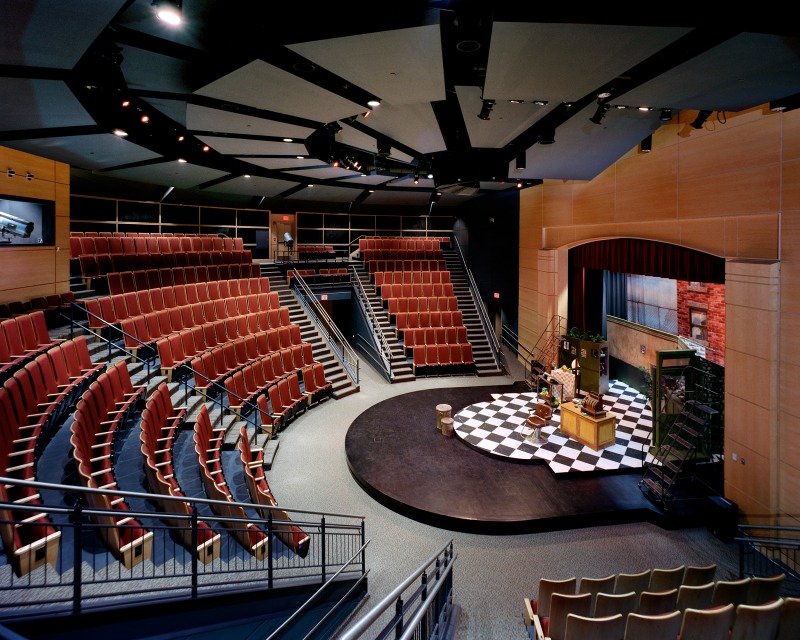
Auditorium at Marblehead High School
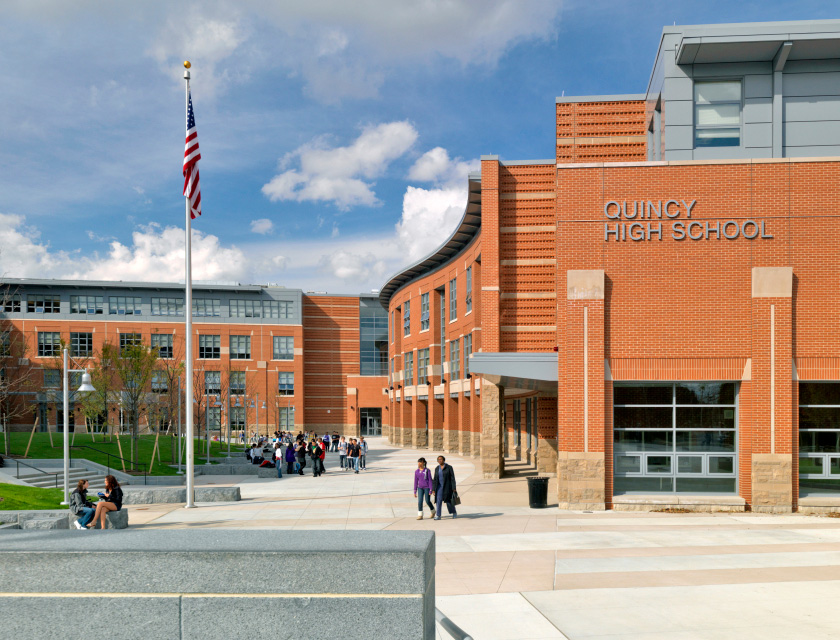
Opened in 2010, Quincy High School’s blend of academic and Career and Technical Education (CTE) programs served as a forerunner for later SMMA high school projects in Somerville and Waltham
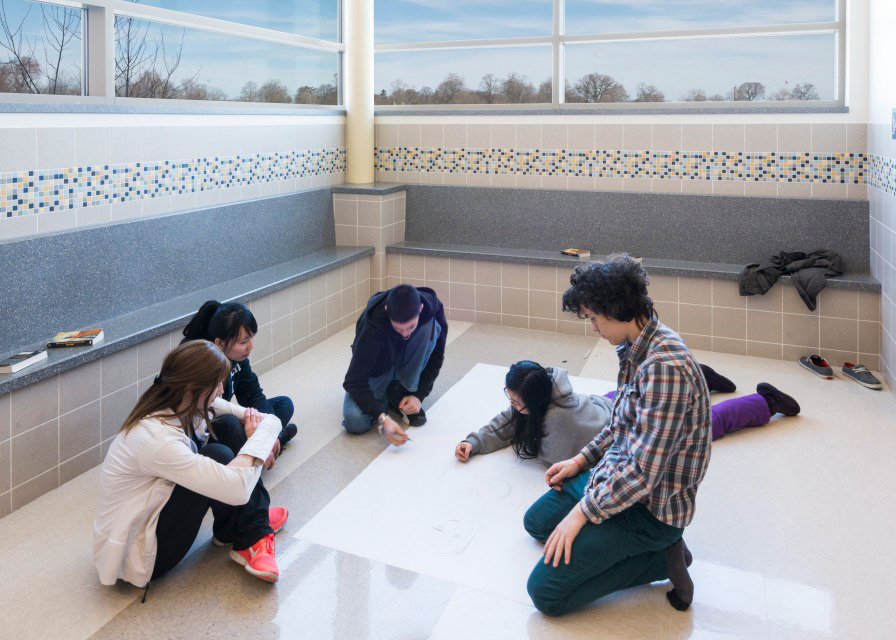
An informal learning space at Quincy High School
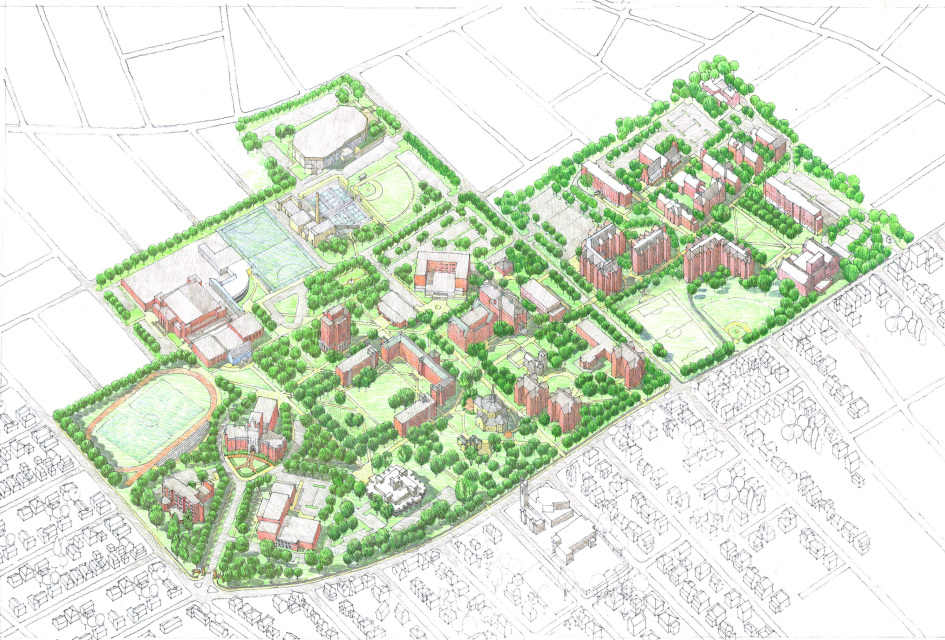
The first of several John Scott-led master plans for Providence College, 1993
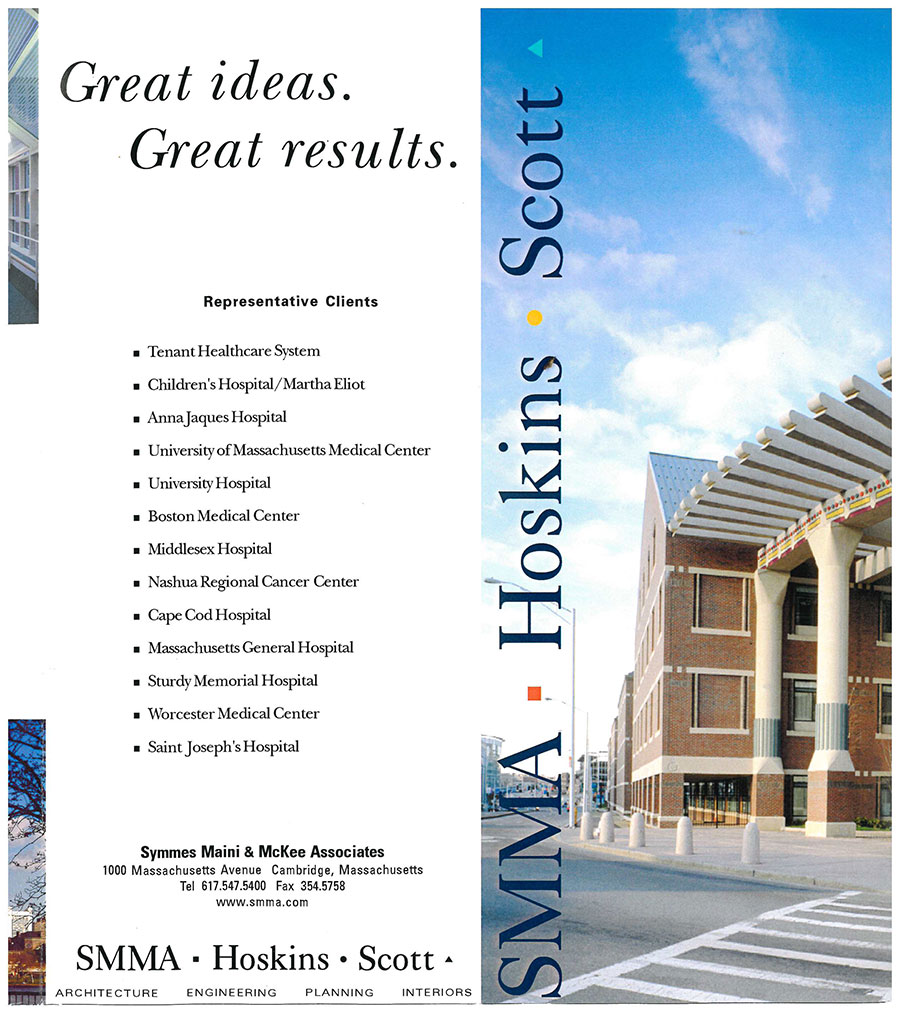
Early marketing for health science work after SMMA’s merger with Hoskins Scott & Partners, 2001
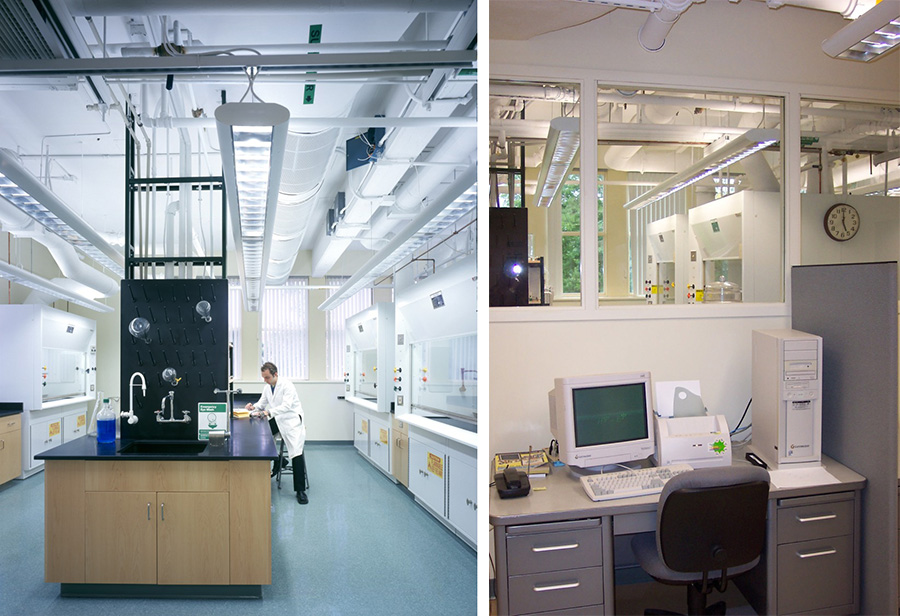
Research labs at the University of Maine/Orono, early 2000s
Recession Renaissance
A steep economic recession from 1987 to 1991 devastated the commercial real estate and advanced technology markets.
The recession caused several lean years for architecture, engineering, and construction firms. New England was hit particularly hard. SMMA reduced its size as the new ownership group fought to keep the company going.
From adversity came innovation and recovery. Among the initiatives of the new leadership group was expanding the service mix of SMMA and continuing to adapt the integrated model of project design and delivery to meet changing needs. Three strategic hires in 1988 helped with these objectives. Architects Tom Coffman and Edward Frenette and engineer Michael Holland joined the firm in 1988 and 1989. Other crucial developments followed:
- The interior design group expanded to become a creative, sought-after team with award-winning work for Talbots corporate headquarters, Nokia’s east coast headquarters, the Cambridge Savings Bank headquarters and Harvard Square flagship bank, and multiple planning, design, and workplace strategy assignments for EMC Corporation’s headquarters.
- Marie Fitzgerald, leader of the firm’s interior design practice and a mentor to rising women designers within and outside SMMA, led the interiors group and later became the first female board member at SMMA. She is currently a firm principal and Senior Vice President.
- Michael Powers, who joined SMMA in 1980 and appointed a partner in 1986, was named company president and CEO in 1997. Among his many initiatives as SMMA’s third CEO was expanding the firm’s employee ownership and shareholder group. He and his partners created an ESOP program that was a pivotal development in the firm’s move towards a more participatory management culture, a strategic tool in the recruitment and retention of talent, and another step forward for SMMA’s evolving culture.
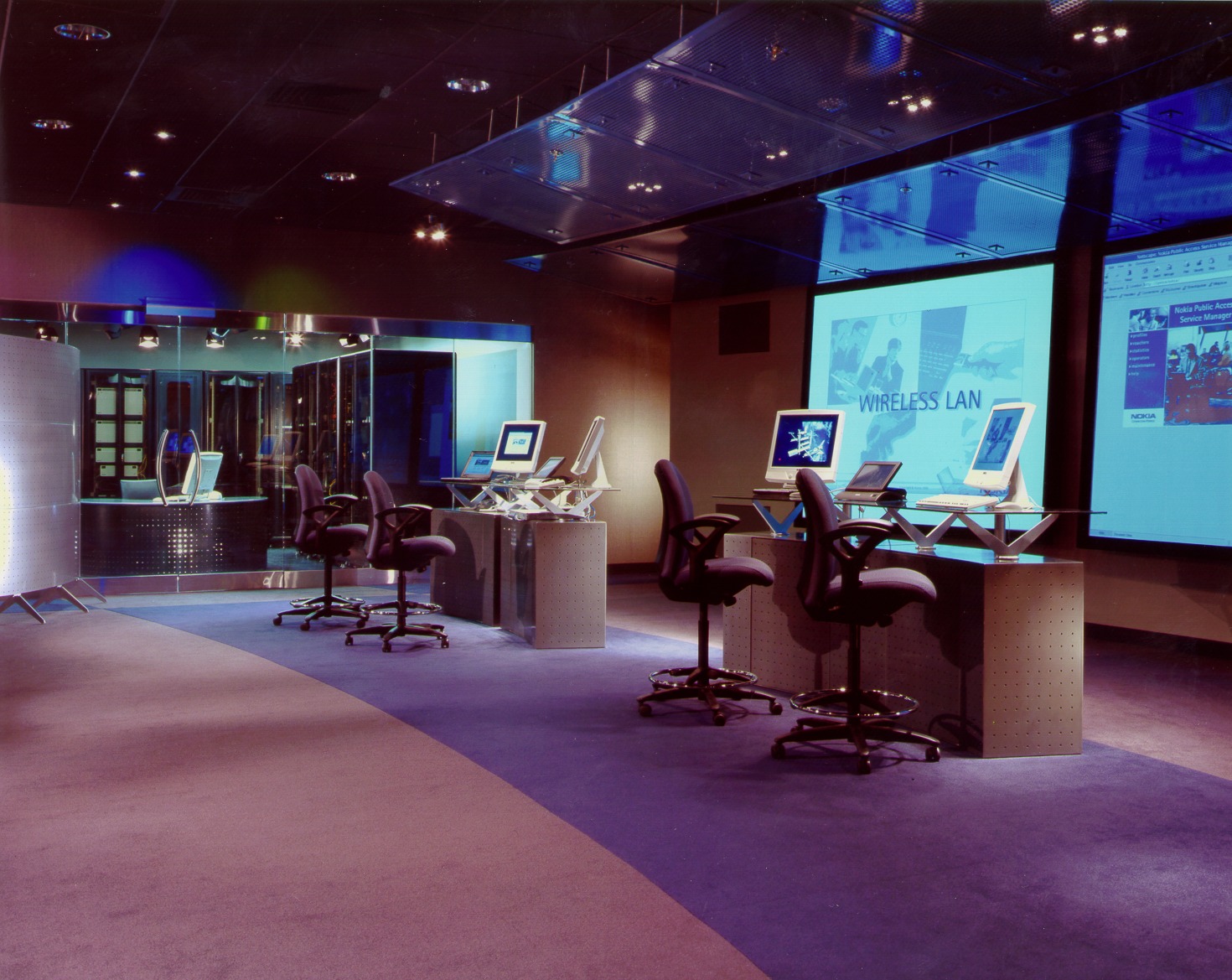
Nokia House in Burlington, MA, early 2000s
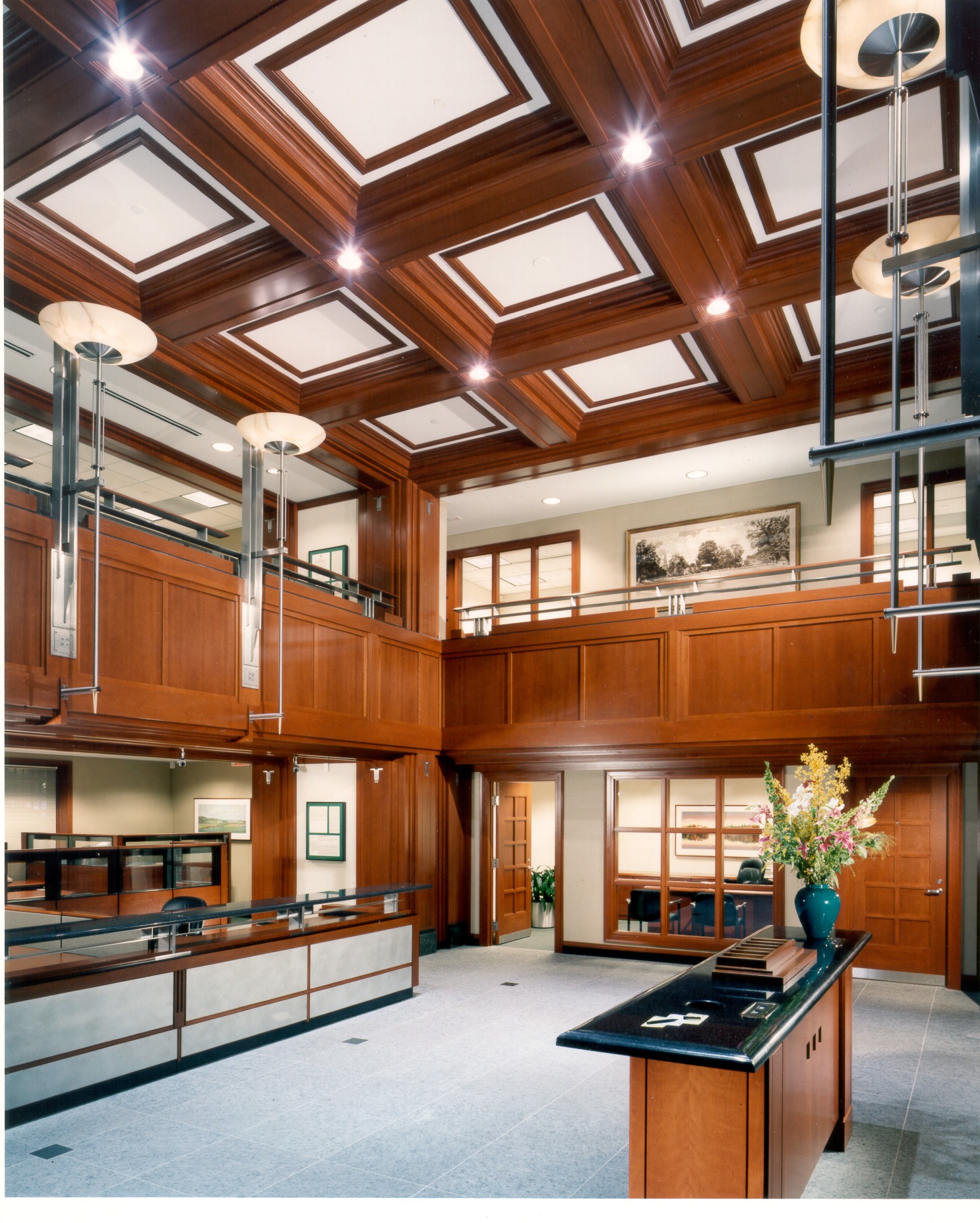
Cambridge Savings Bank flagship branch in Harvard Square, renovated in the late 1990s

EMC Corporation (now DELL Technologies) Executive Briefing Center in Santa Clara, CA
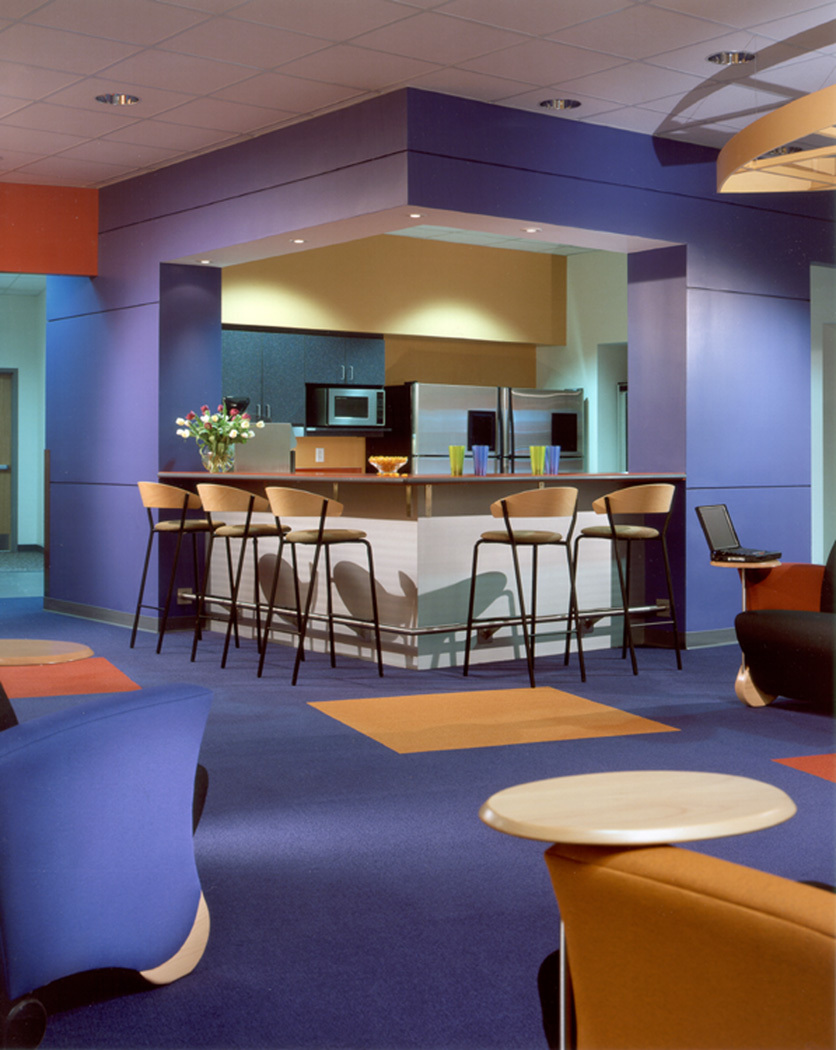
EMC Headquarters in Hopkinton, MA, early 2000s
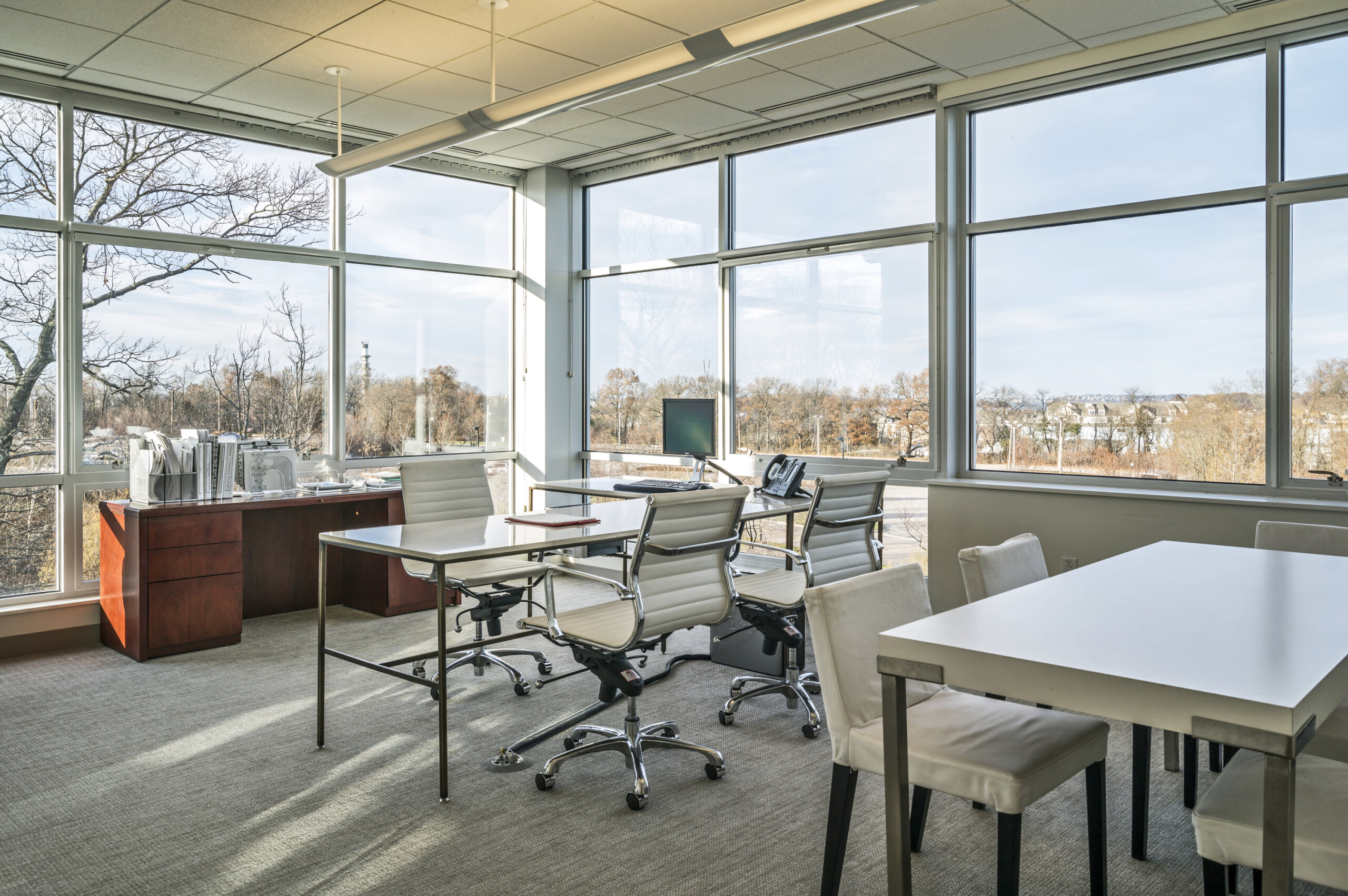
Talbots Headquarters in Hingham, MA, 2013
New Markets and Clients
21st century growth under new leadership added staff and service depth to SMMA’s multi-disciplinary offering.
The Next 50
View Full Timeline
2005’s 50th anniversary theme, “The Next 50”, reflected on the firm’s past and future.
In addition to a spirited celebration at Boston’s Museum of Science, the anniversary series featured an in-house design competition forecasting the future state of campus design, workplaces, data centers, and sustainable buildings. The forward focus of the anniversary was a prelude to things to come as SMMA entered a phase of progress and cultural promise.
As the company entered its next 50 years, SMMA experienced growth and strategic challenges. An influx of global technology and regional education clients – each presenting complex workplace, customer, and learning aspirations, fueled the need for continuous change. Hopkinton, MA-based EMC, among the world’s most successful and fastest-growing tech companies in the early 2000s, partnered with SMMA for office/workplace, cleanroom, data center, and customer experience facilities in MA, NC, and CA. Waters Corporation, a longtime SMMA client, entered a fast growth phase decade that doubled the size of their Milford, MA headquarters campus. GE Healthcare, GoDaddy, and State Street Bank commissioned SMMA for corporate work and amenity spaces to attract and retain the best talent.
Several large, transformational K-12 school projects were planned and designed for communities in Andover (Bancroft Elementary), Quincy (Quincy High), and Marblehead (Marblehead High). In the early 2000s, higher education designs included student life buildings on the campuses of Providence College and Springfield College.
In response, the firm opened a new office in downtown Providence, launched a studio dedicated to federal, state, and other government clients' needs, faced the 2009-2012 recession, and ushered in a generational leadership transition that invigorated company culture.
Leadership Transition
|Early 2000s Leadership Transition Cultivates a Design Collective
In 2007, Ara Krafian was elected as the firm’s fourth CEO and president, succeeding Mike Powers. “In our business, there’s no product or proprietary idea,” said Krafian. “Any success we have comes from our people. The ways we can work together to solve complex problems for clients by tapping into diverse perspectives match the layered needs of our clients.”
Integrated design took a new and bold turn at SMMA as the next generation of leaders combined the firm’s integrated model with an energetic investment in the people and teams delivering the service. Krafian’s leadership built on the foundational idea of cross-discipline collaboration, applying this core belief to benefit clients and differentiate the company.
The deep recession of 2008-09 sparked reflection by SMMA’s new CEO and leadership team. “We worried about losing the firm,” Krafian recalls. “And that turned out to be an opportunity to create an updated version of the company as a place where team-based design creativity thrives.”
Three focus areas of change and focus helped advance the collective mindset and identify/guide a new set of future leaders:
- People and talent development – Invest in professional development including training, internal knowledge sharing, and individual initiatives such as outside association involvement and volunteering
- Employer of choice advancement – Recognize that employees will want to stay if they are treated fairly and share in the profits earned; offer above-standard benefits, compensation, and shareholder opportunities
- Team engagement and inclusion – Establish a fully collaborative design practice by offering people exposure and integration with other disciplines; cultivate engineers who understand architecture and emphasize getting to the best solution with every voice heard
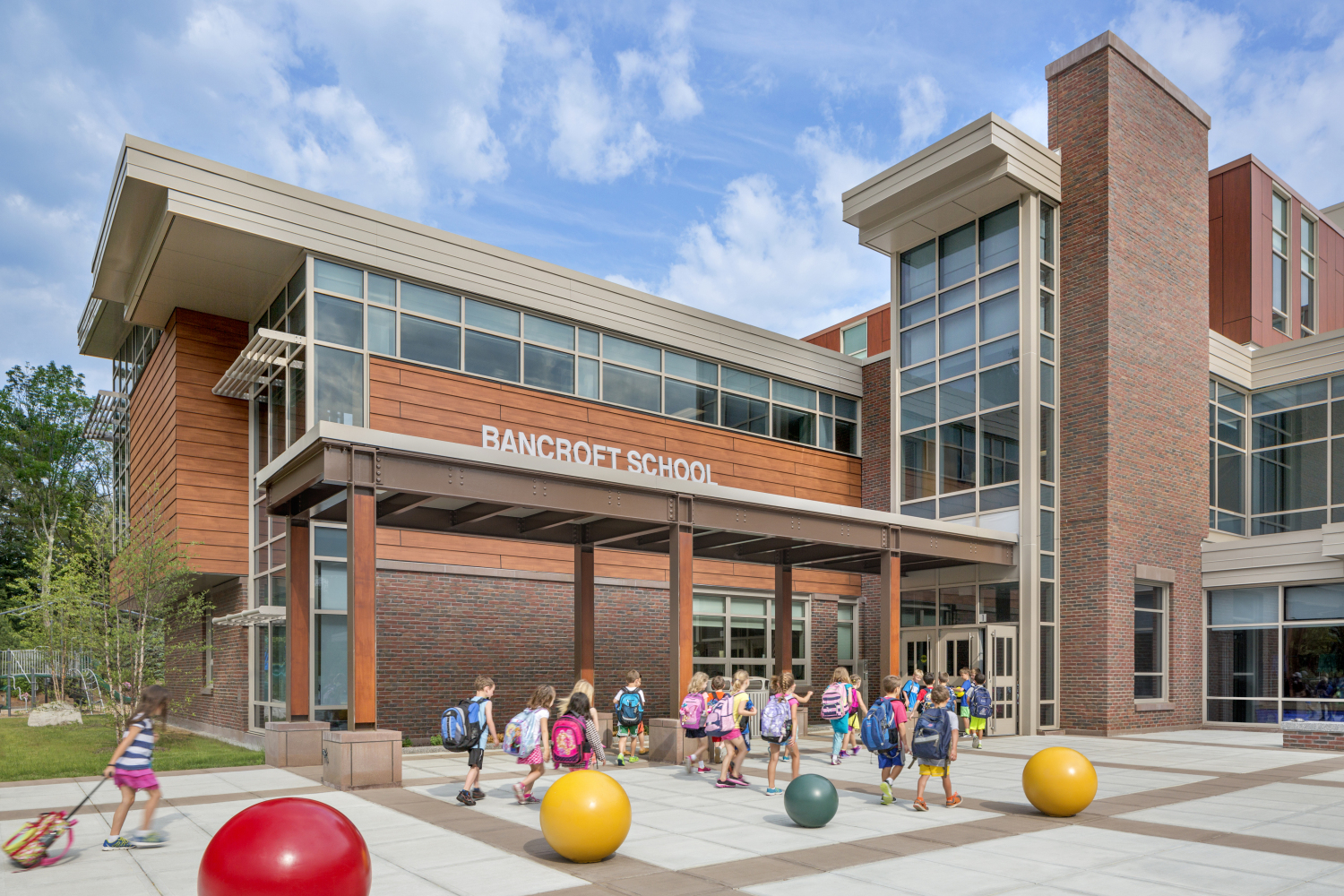
Bancroft Elementary School in Andover, MA

Dell Technologies Center of Excellence
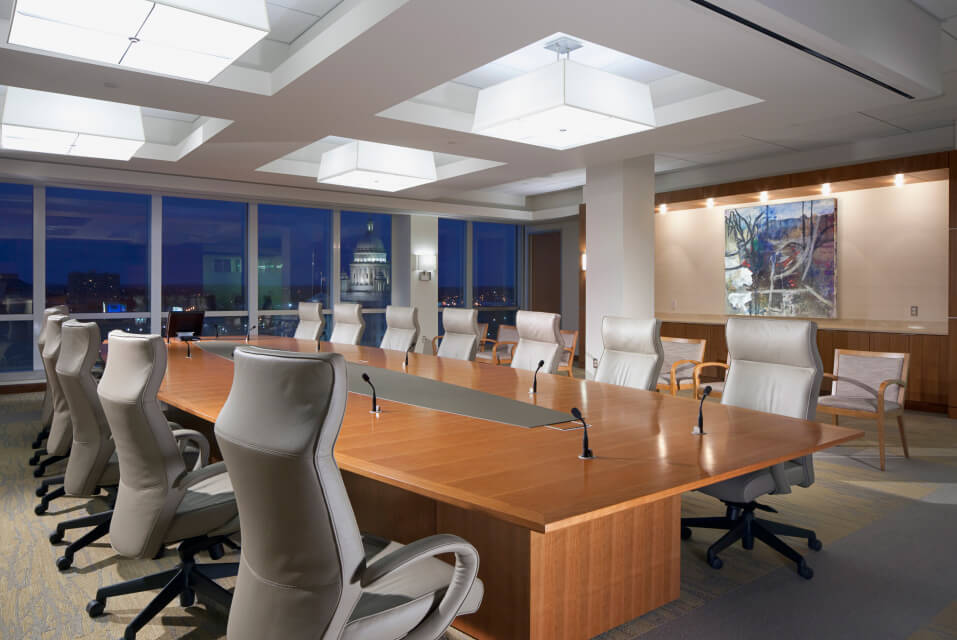
Blue Cross Blue Shield Headquarters in Providence, RI
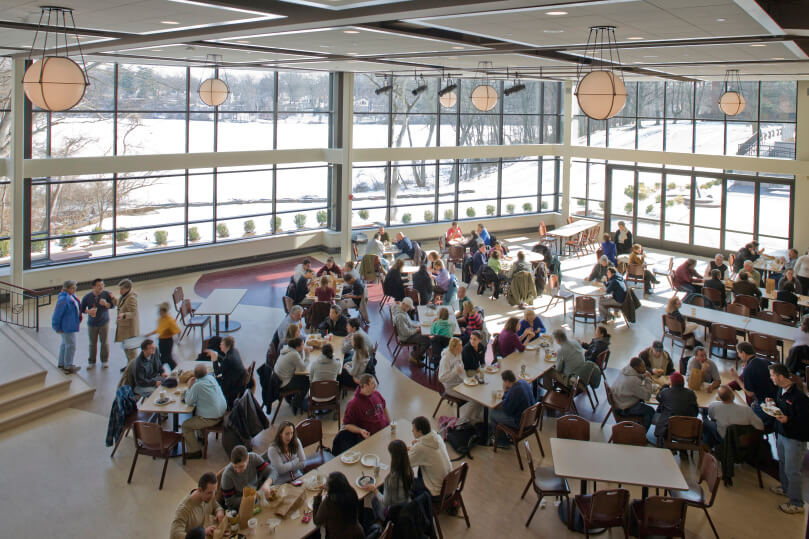
Springfield College Richard B. Flynn Campus Union in Springfield, MA
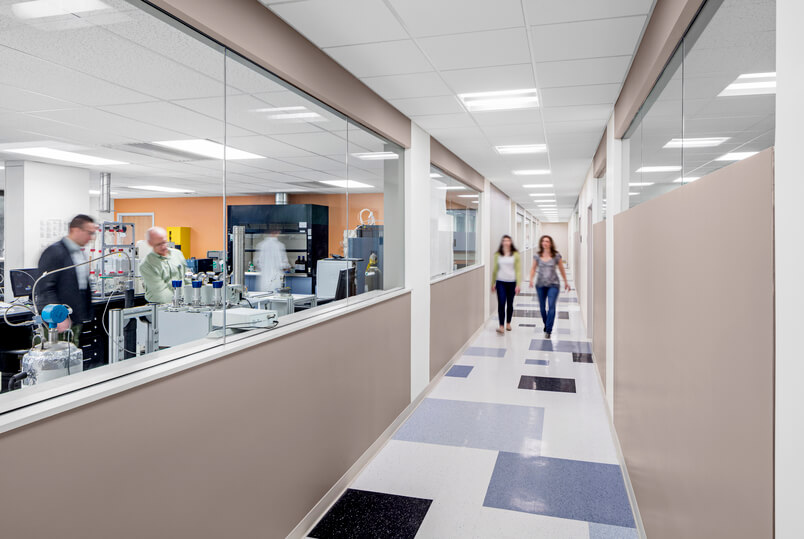
Waters Corporation Headquarters in Milford, MA
Embracing Complexity
Economic and social turbulence spotlighted the role of the strategic designer.
As social, economic, and climate issues become increasingly challenging, clients face questions that were unimaginable even a decade ago. These include how to educate the next generation, creating healthy, productive workplaces, and designing and building affordably when construction costs soared.
The old playbook reached obsolescence. The high bar for client success now requires design partners who will ask hard questions and reach far beyond conventional solutions.
SMMA’s Brian Lawlor describes it as an absence of ego around design ideas. “There’s none of this notion of, ‘I’m working on my design, and I'll give it to you when it’s done.’ Effective design today requires an exchange of ideas and perspectives that come to a united, future-ready solution to complex challenges.”
Women Rising in the AEC Industry
|Within SMMA, and throughout the industry, the once male-dominated design and construction business began a gradual and long overdue turn in the early 2000s.
More women graduates from architecture and engineering schools emerged, and this allowed design firms to diversity their teams and advance talented women into management roles.
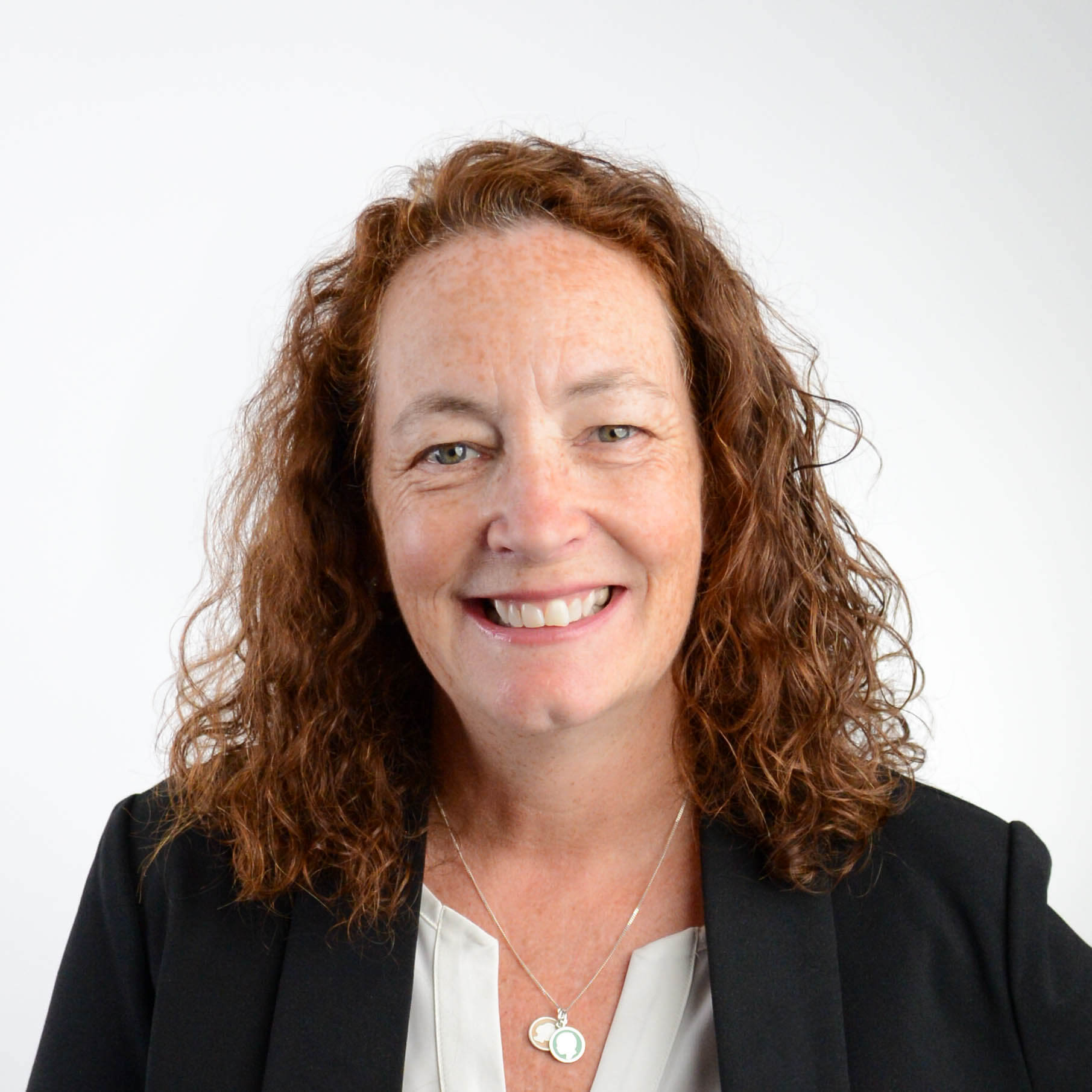
Lorraine Finnegan, CEO, President, and Chairman of SMMA, emphasizes the importance of role models.
“Women in architecture and engineering need to be able to look out there and see someone and say, ‘If she can do it, I can do it.’ In the past, we didn’t have a vast number of role models in the industry. We’re finally getting more females into the profession and keeping them in the profession,” she said. “That's the important thing, how do we keep them, especially when working parents begin to raise a family? We need to be creative and flexible.”
Video: The Women Who Inspire Us
An integrated design model, once a promising idea tested by the company’s founders 70 years ago and evolved since, came full circle as a strategic advantage for SMMA teams and clients solving problems together in the 2000s.
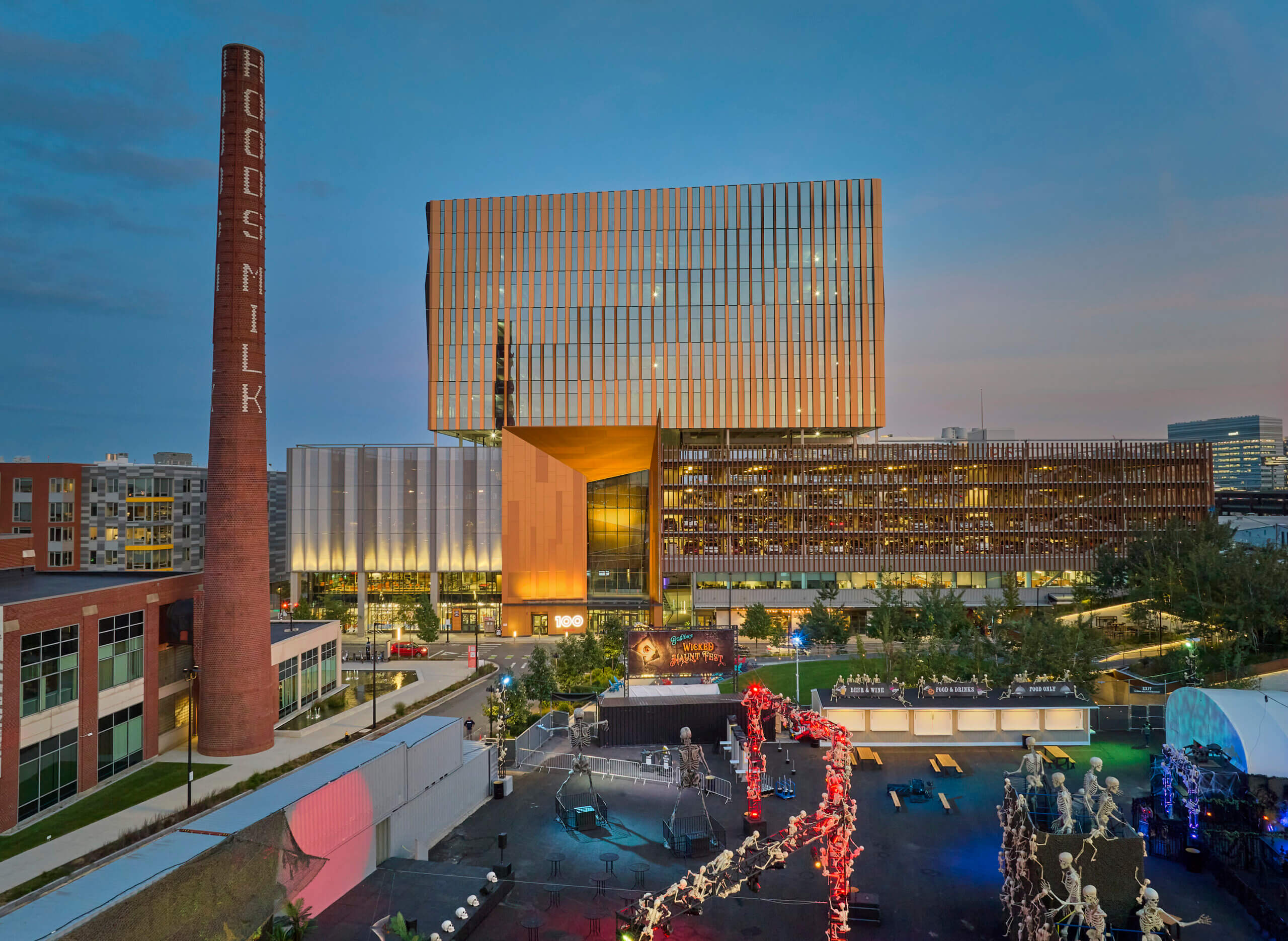
100 Hood Park Drive in Boston, MA
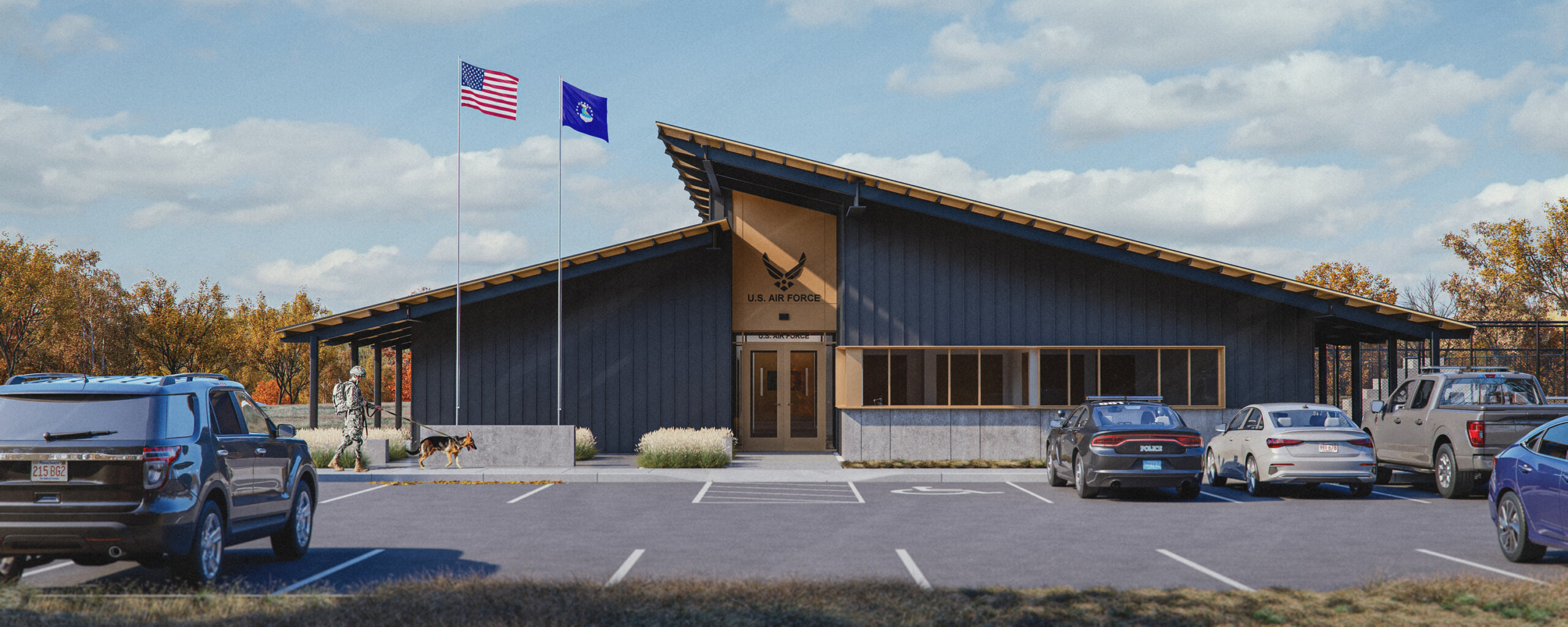
HANSCOM Air Force Base
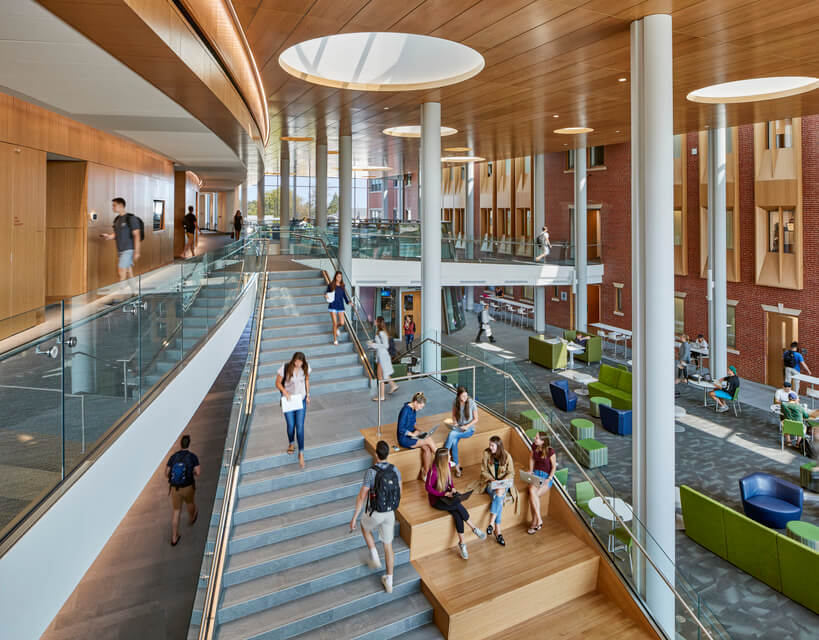
Providence College School of Business in Providence, RI
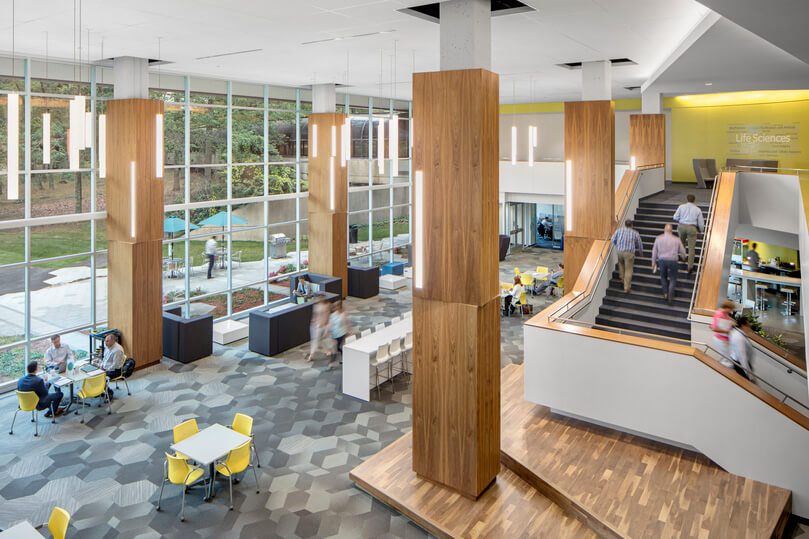
Cytiva Headquarters in Marlborough, MA
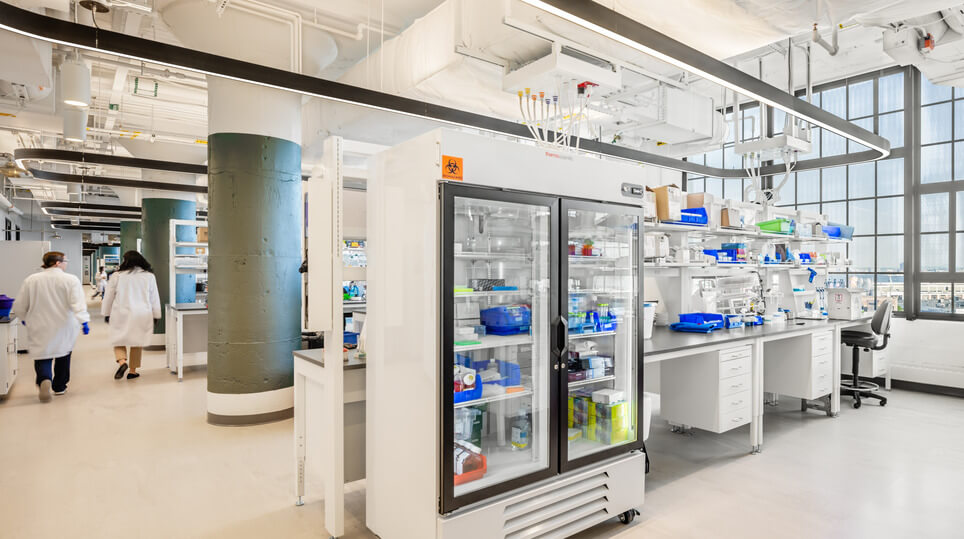
Entrada Therapeutics in Boston, MA
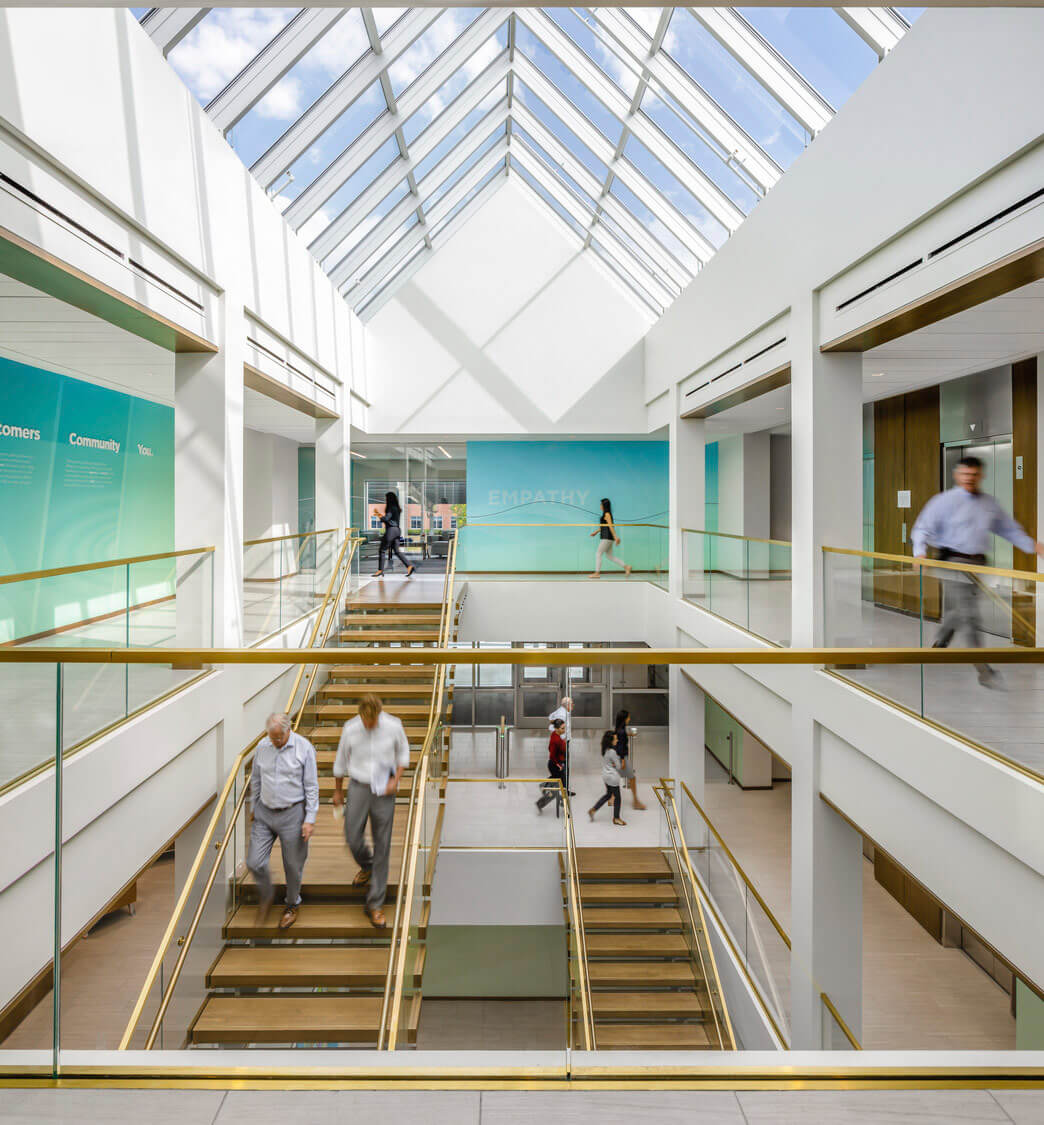
Cambridge Savings Bank Operations Center in Waltham, MA
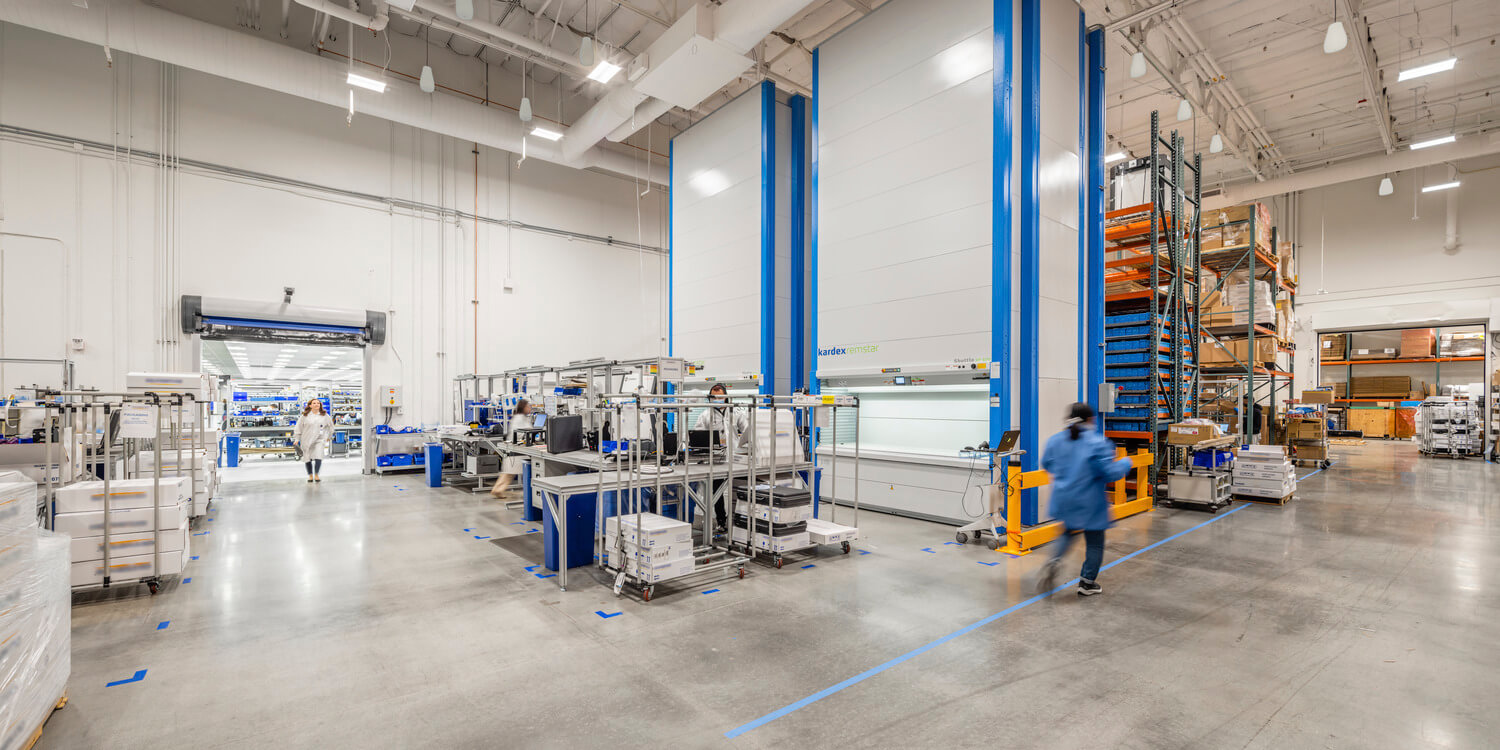
Olympus Corporation in San Jose, CA
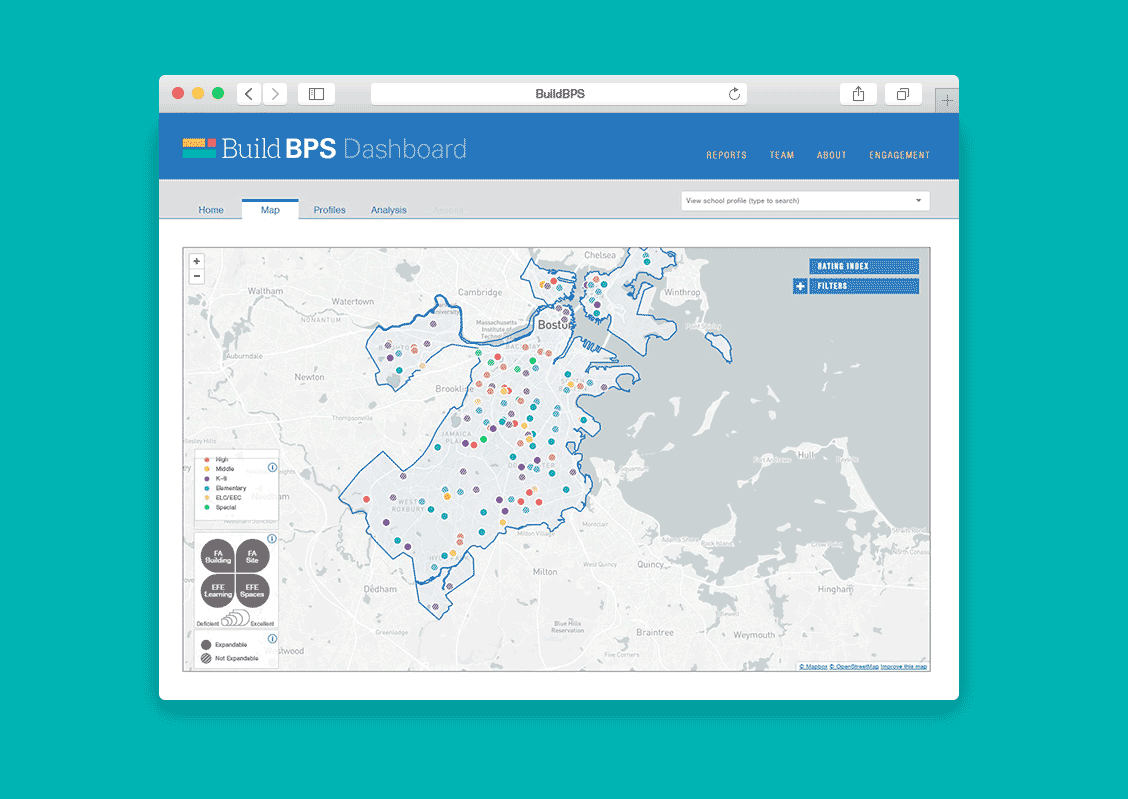
BuildBPS Master Plan Dashboard
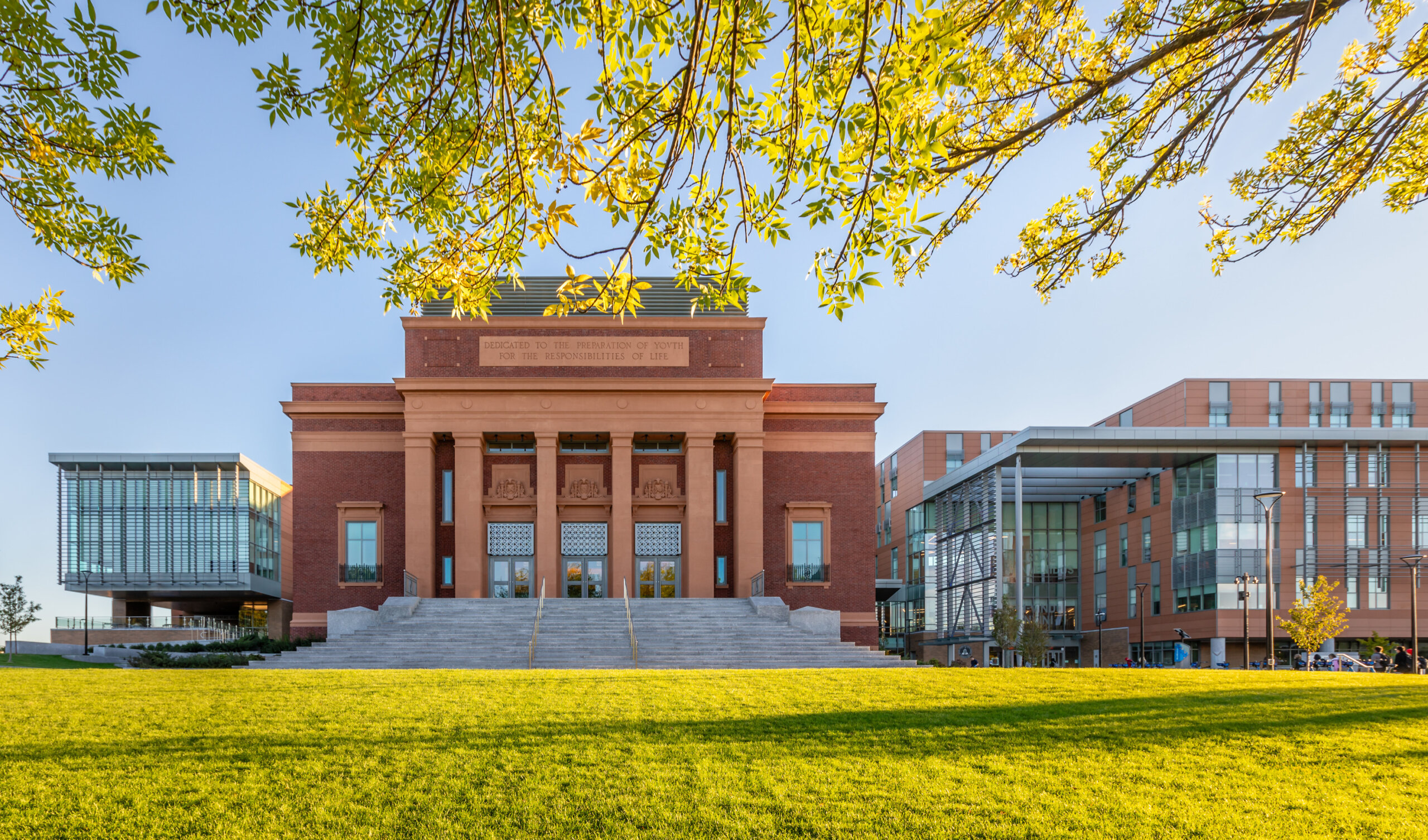
Somerville High School in Somerville, MA
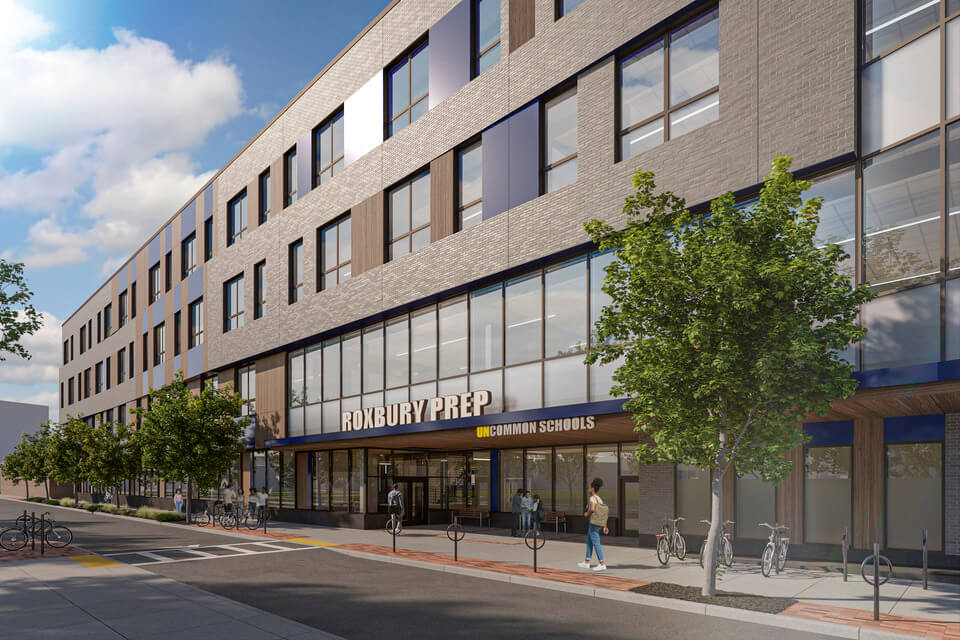
Roxbury Prep School in Boston, MA
